Year 1 Subtraction Worksheets
Addition and Subtraction Fact Families (up to 10)
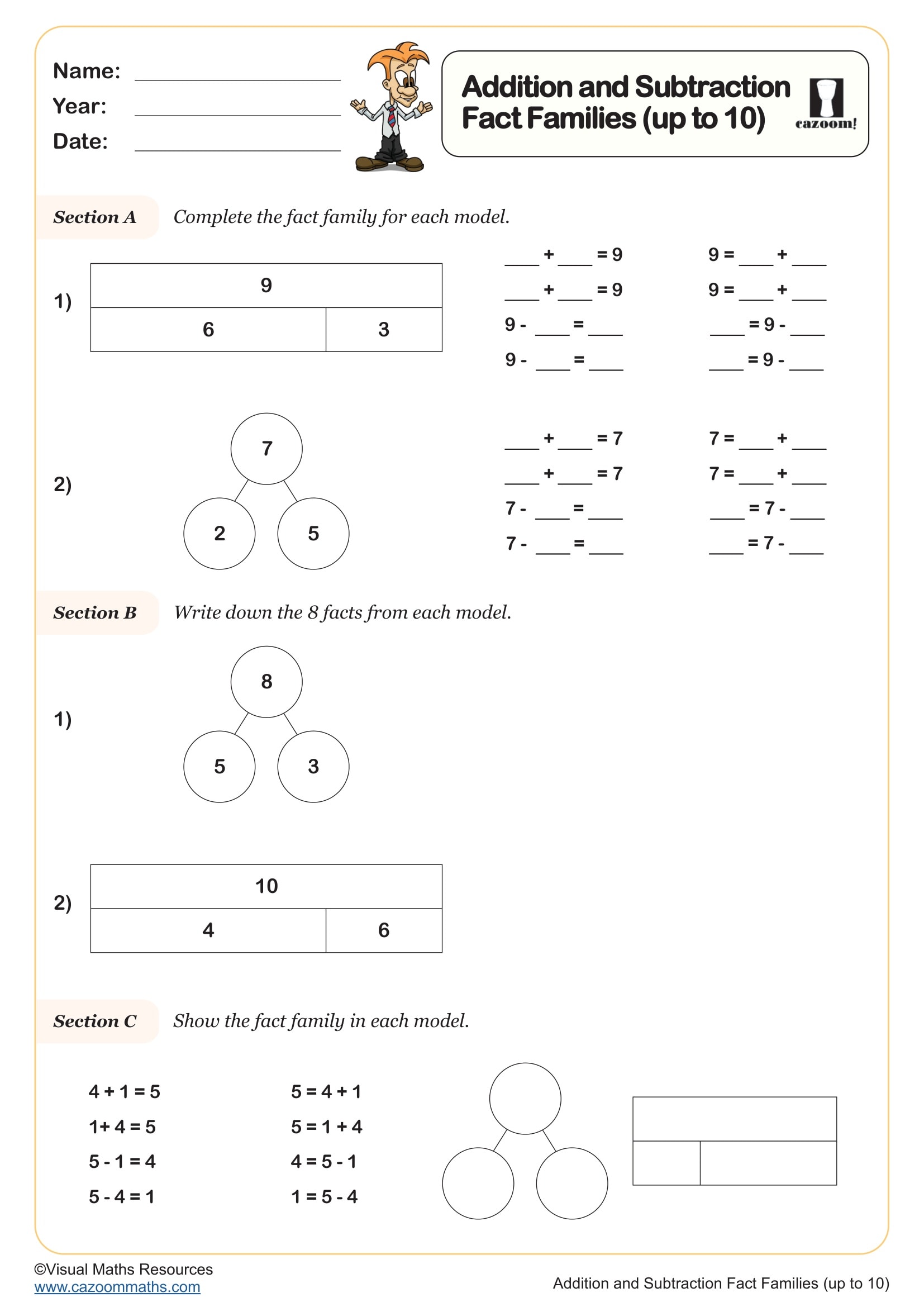
Finding the Difference (A)
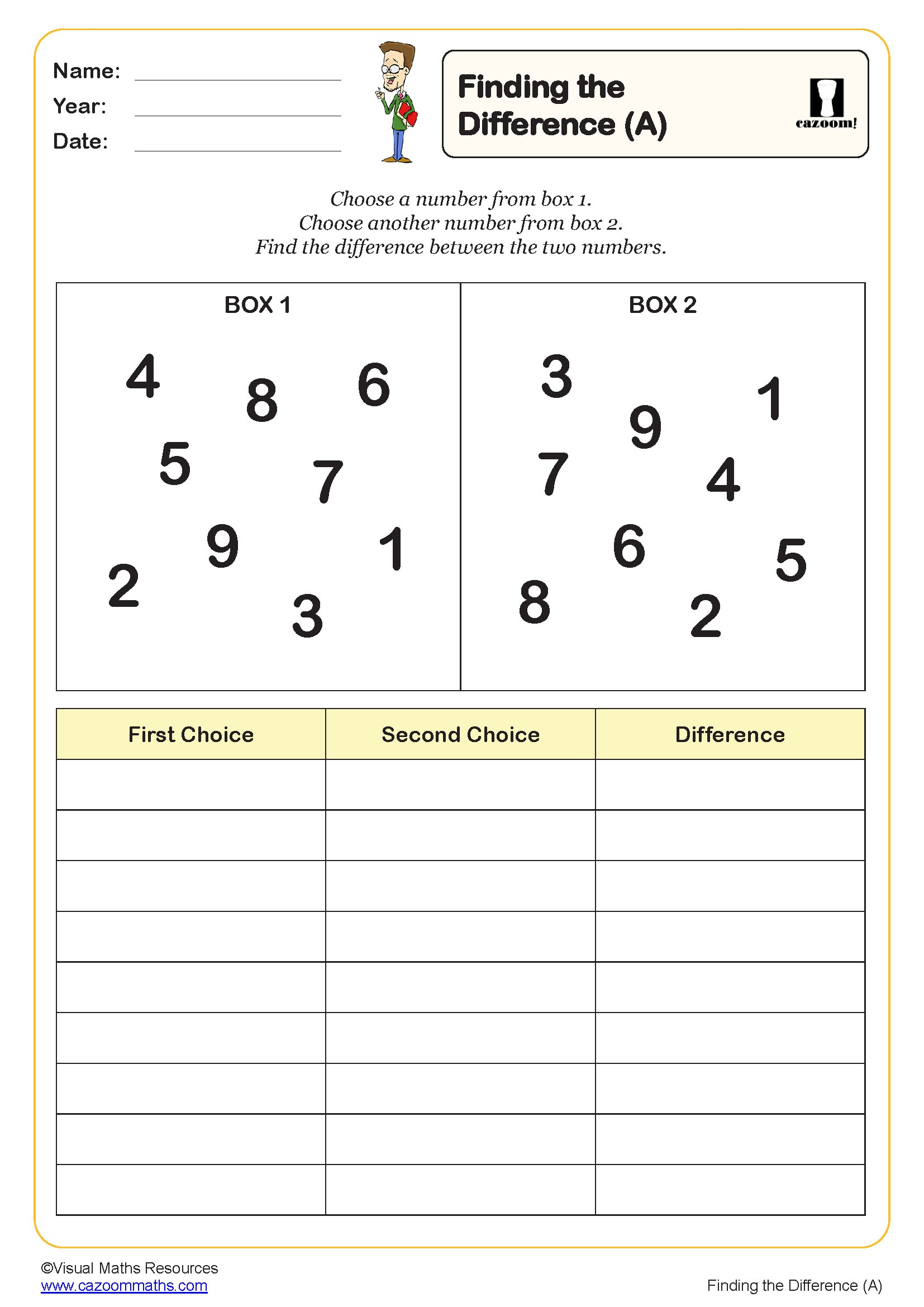
Finding the Difference (B)
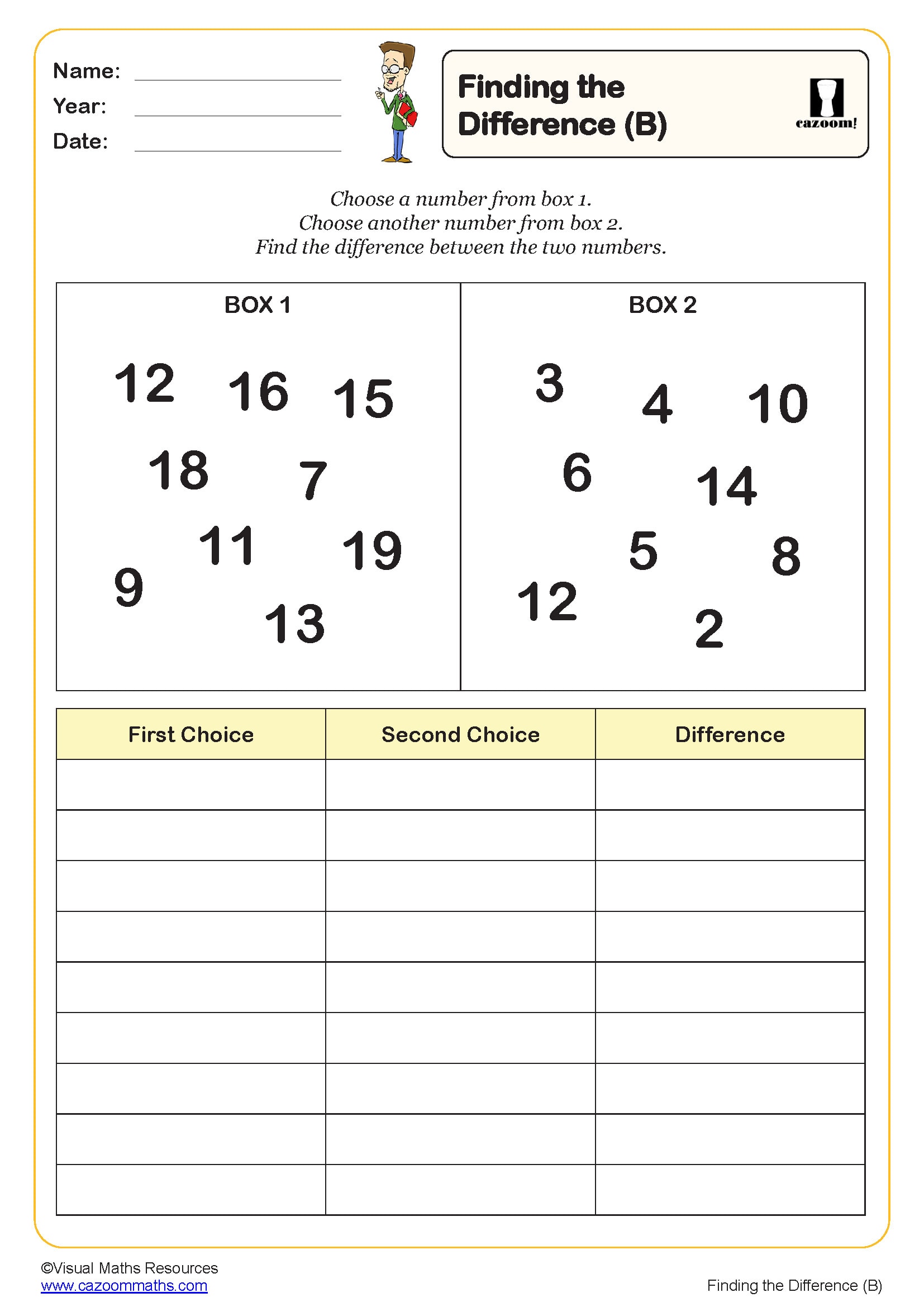
Match the Answers (A)
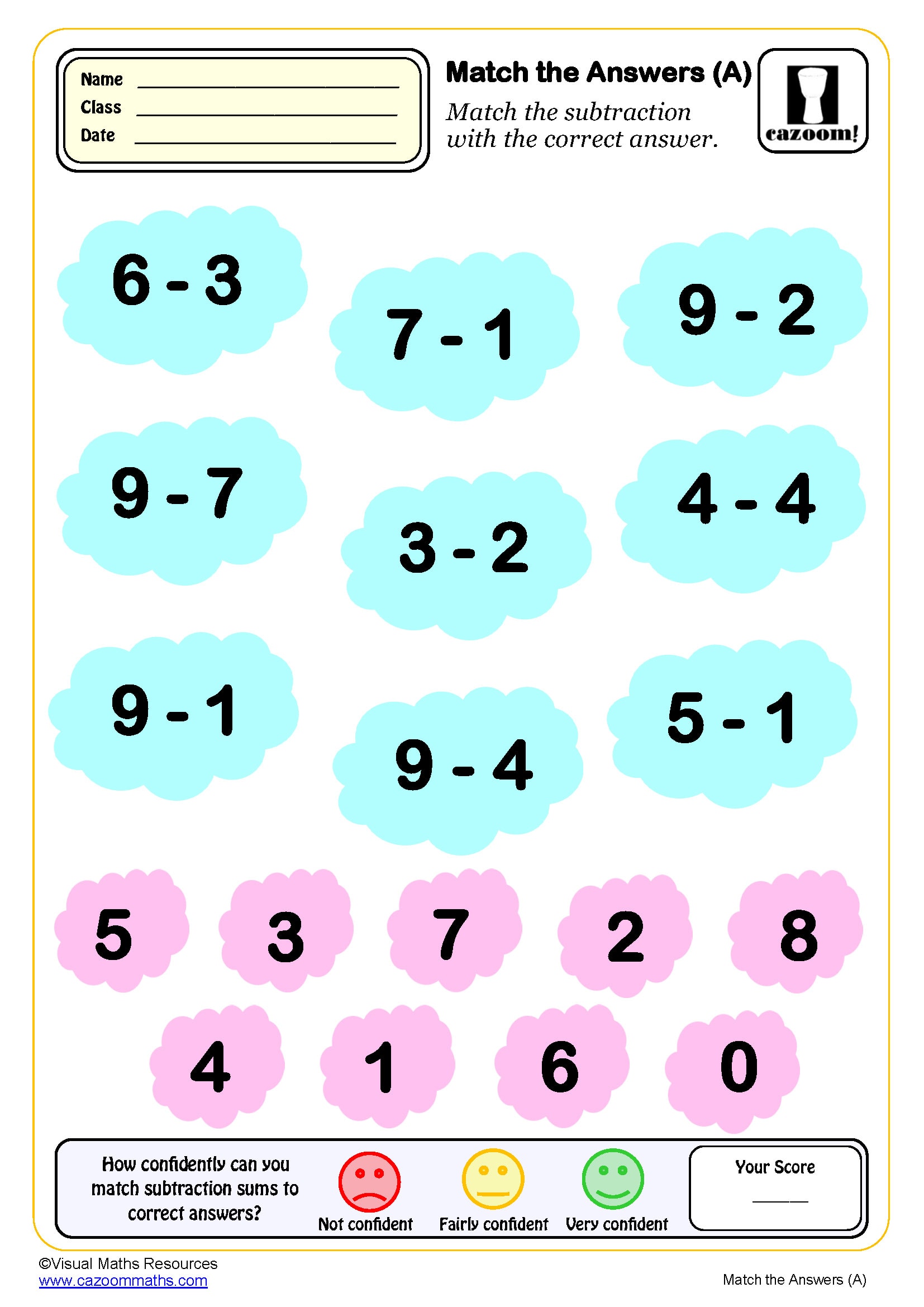
Part Whole Models - Find a Part (Within 10)
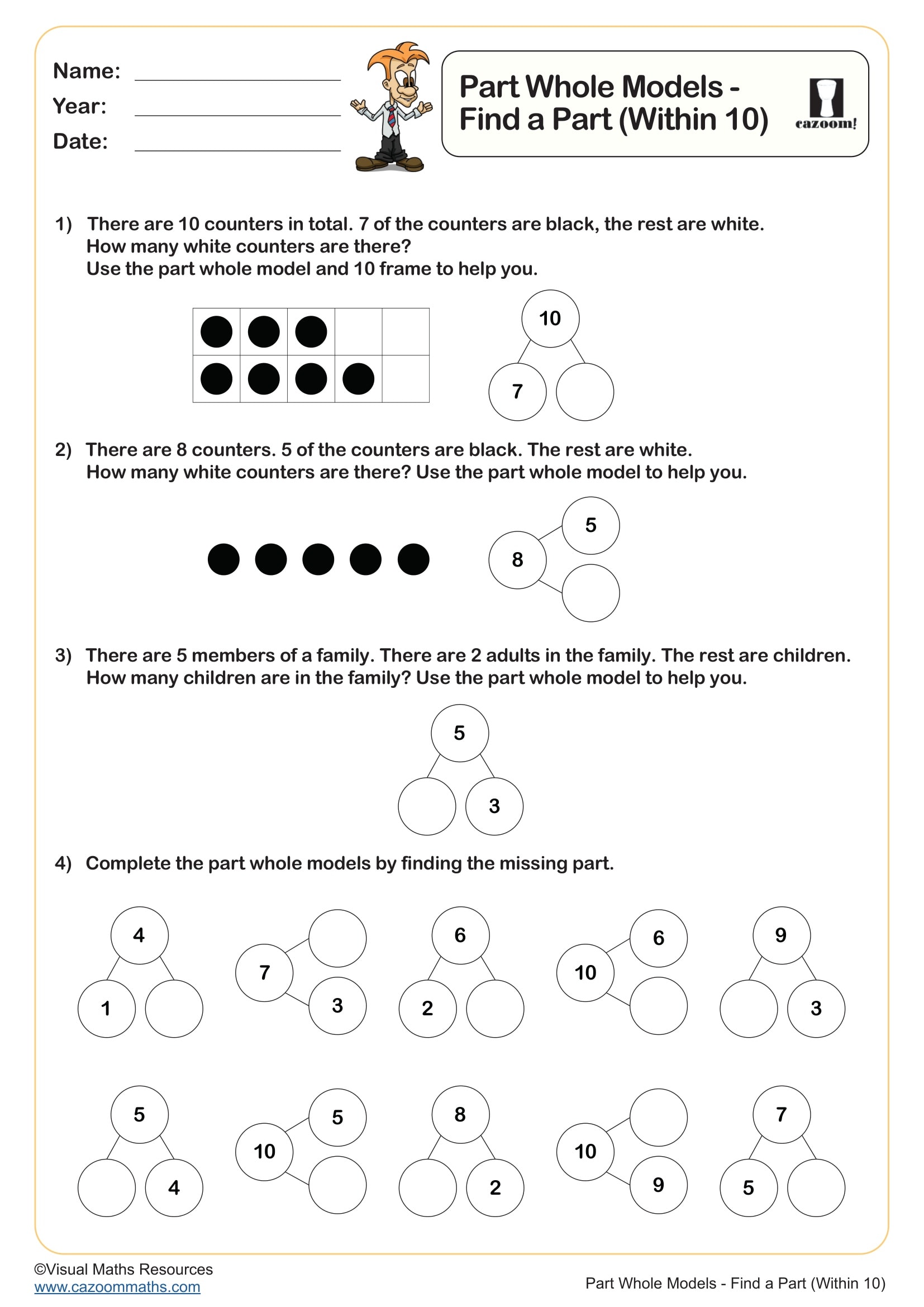
Part Whole Models - Find a Part (Within 20)
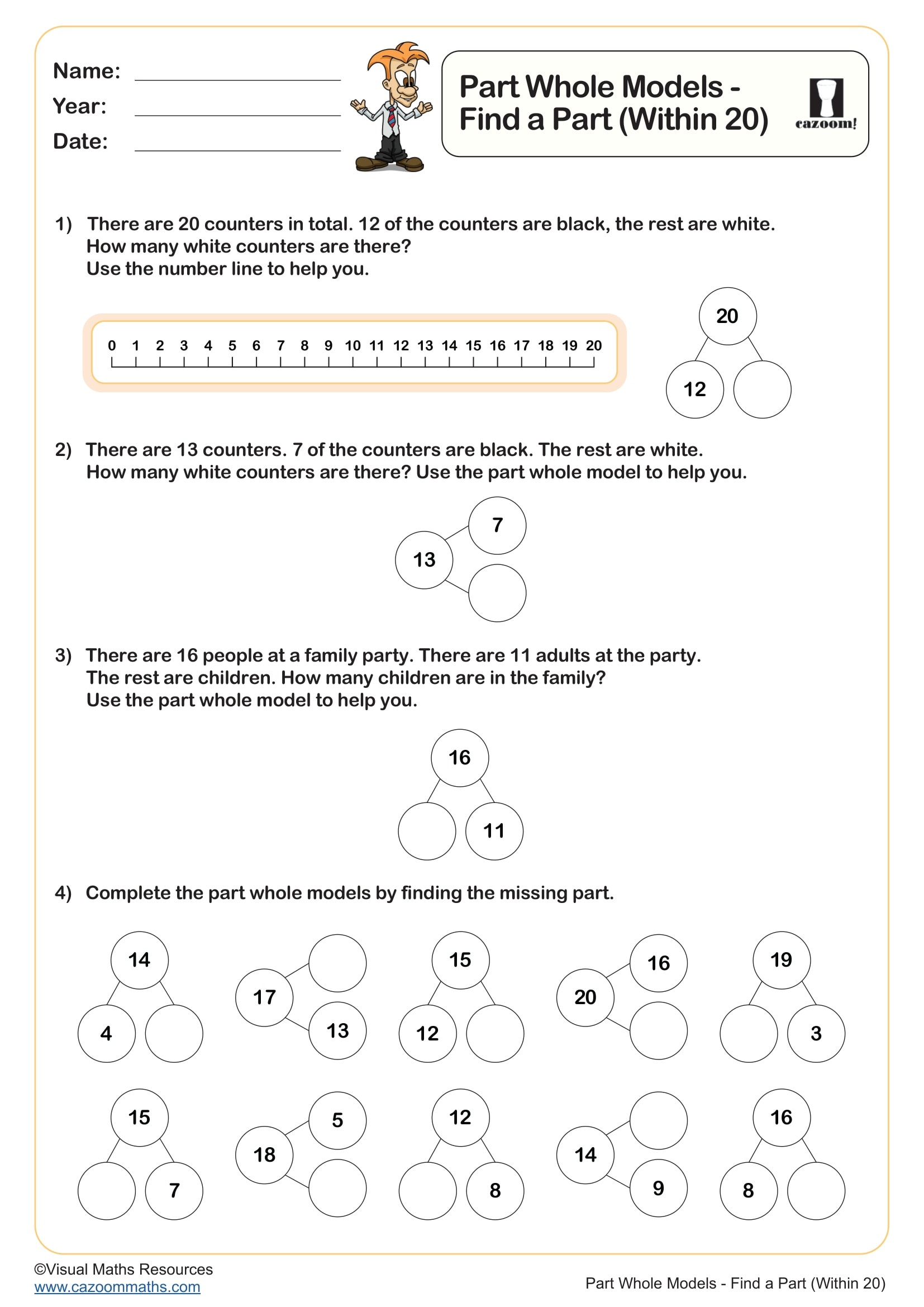
Subtracting from 10 Drills (10 questions)
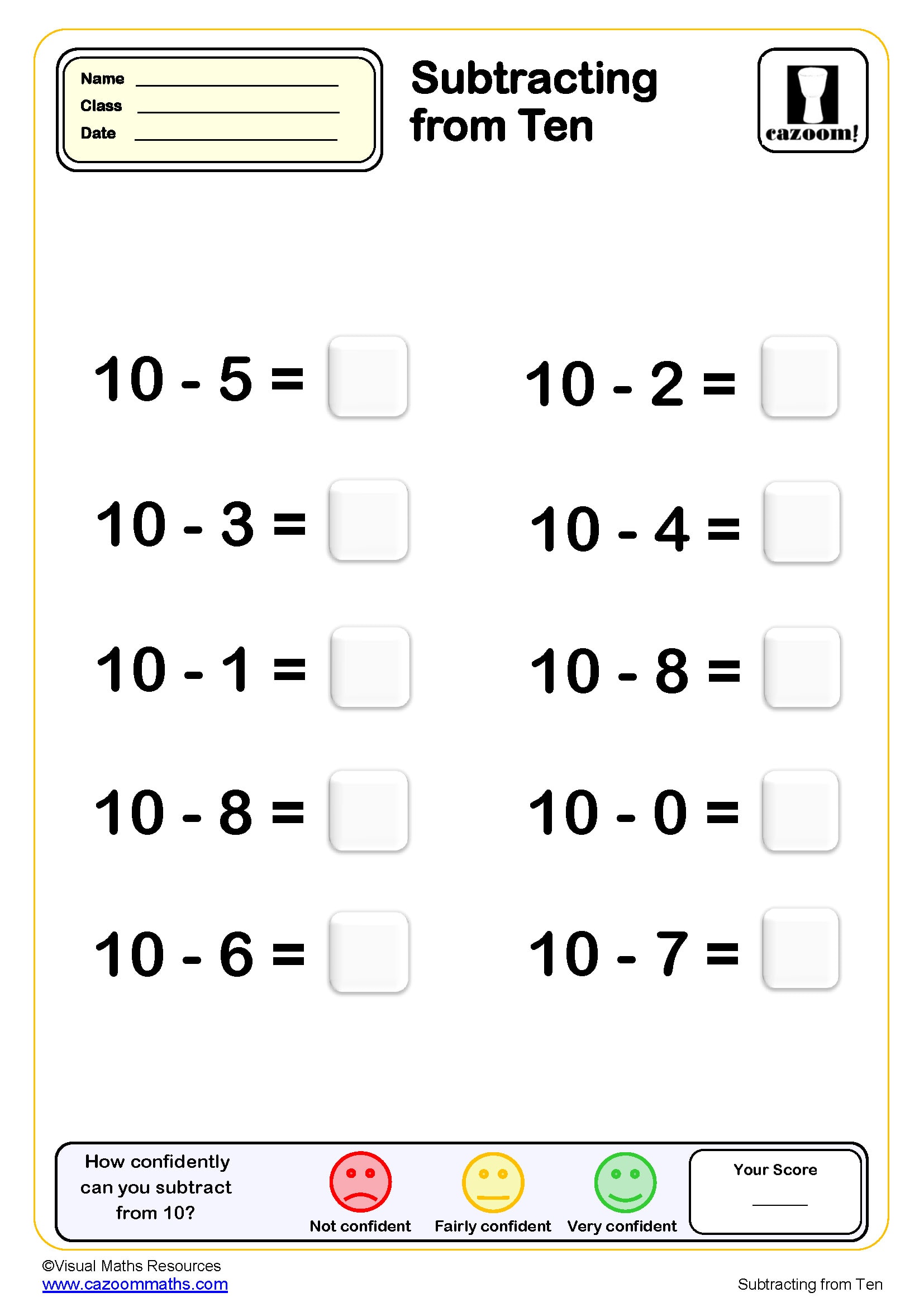
Subtracting from 10 Drills (20 questions)
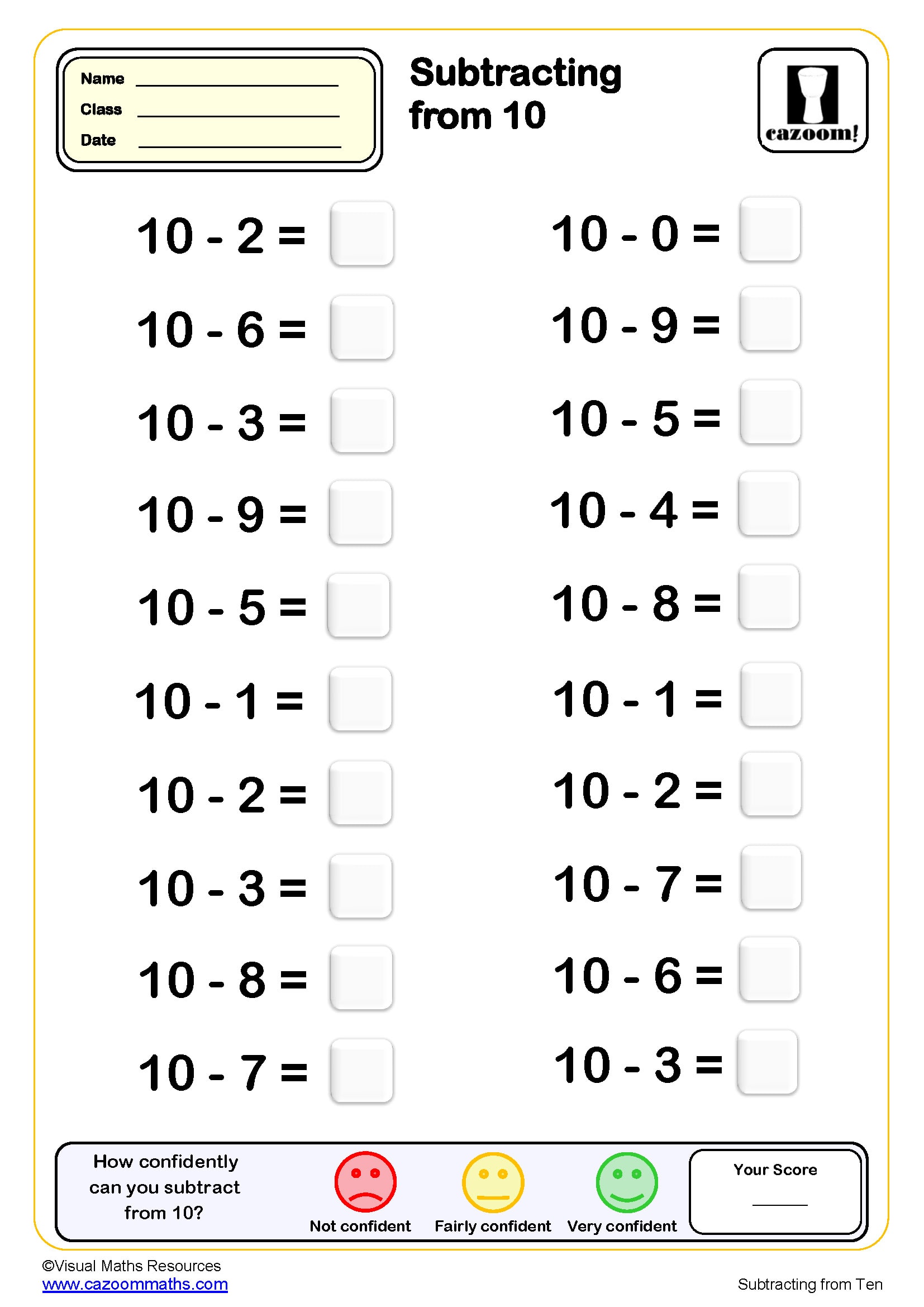
Subtraction Using Number Lines (Subtracting Single Digits from Numbers up to 20)
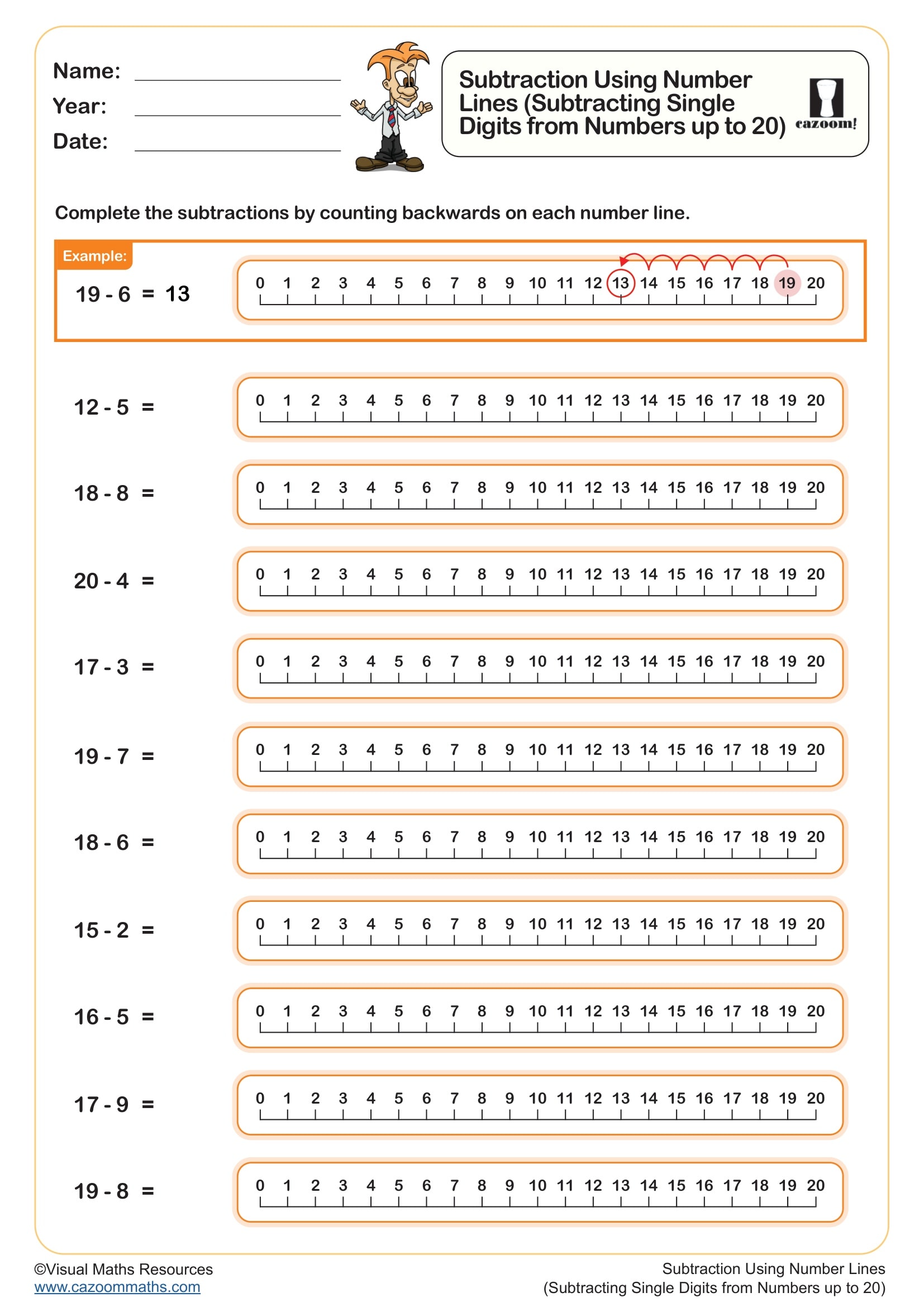
Subtraction Using Number Lines (Up to 10)
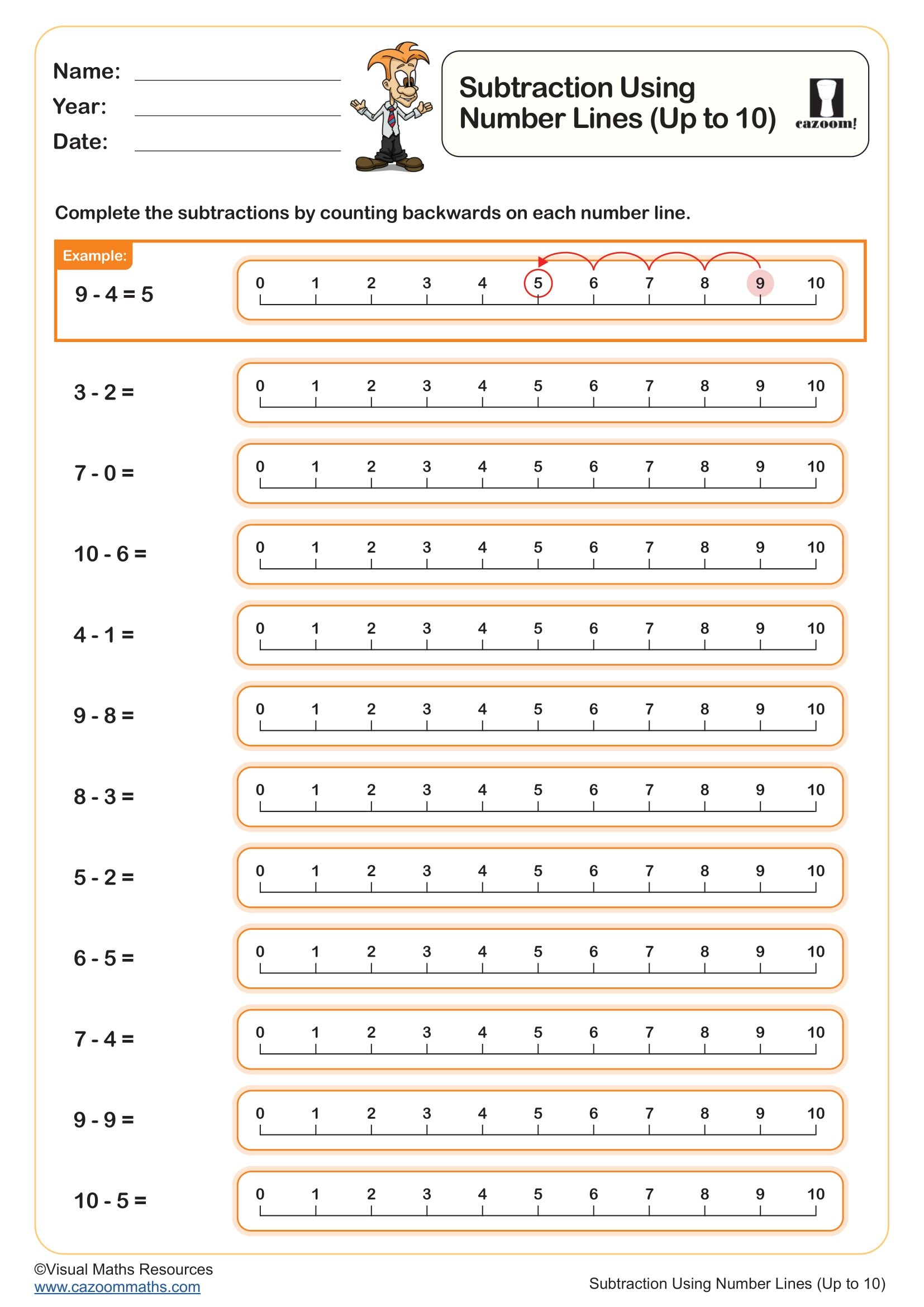
Subtraction Wheels (A) (Subtracting up to 10)
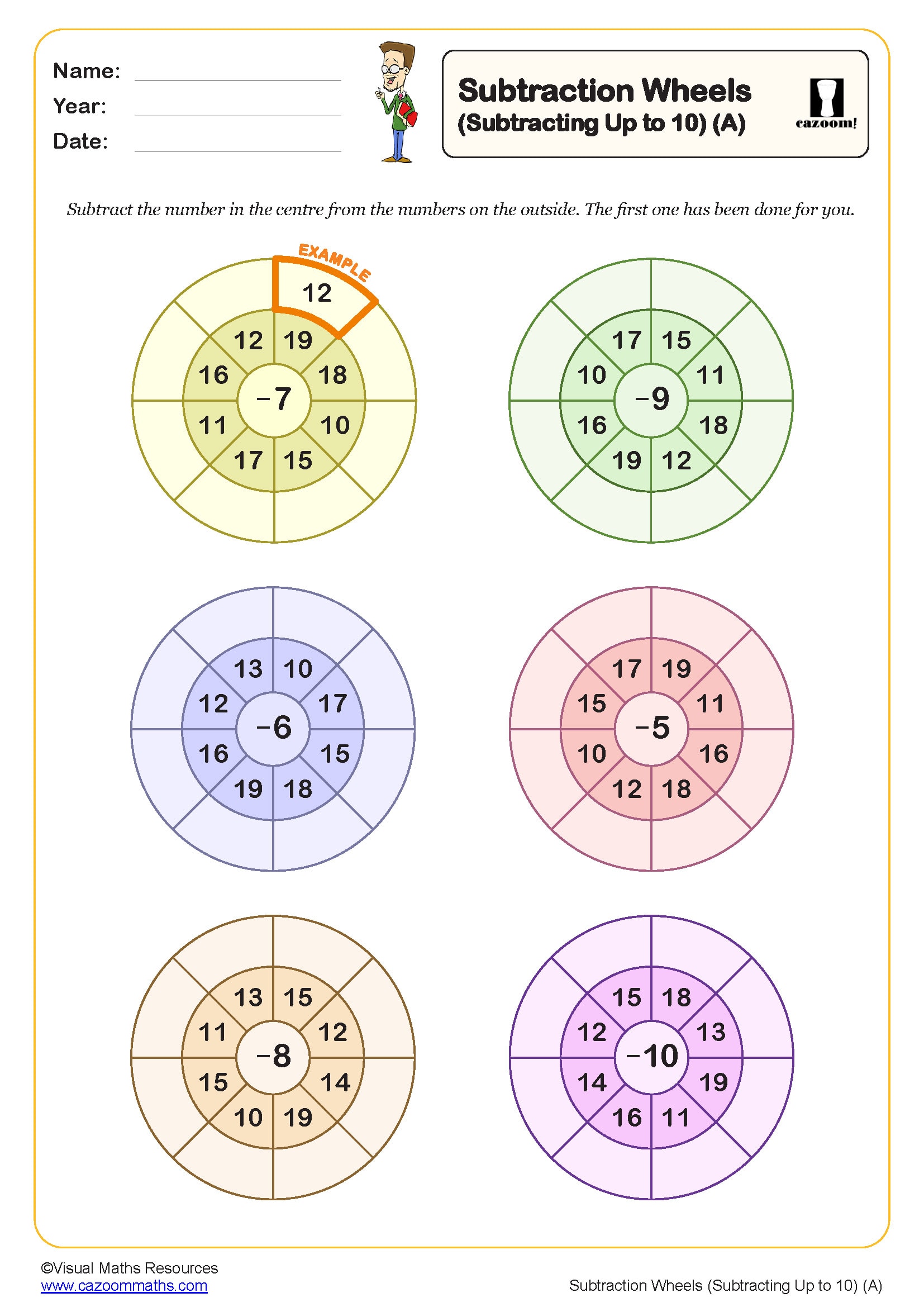
Subtraction Wheels (Subtracting 1)
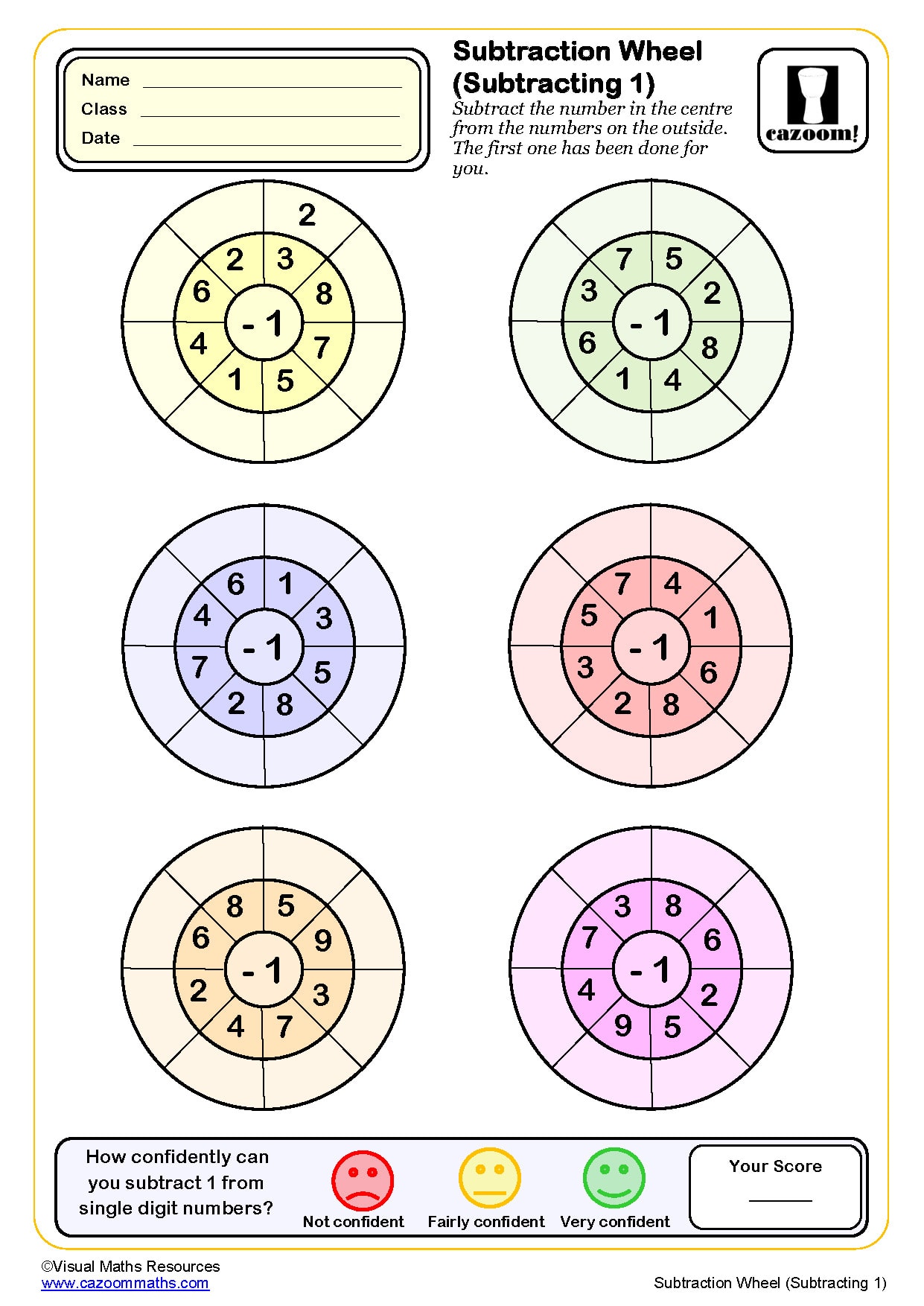
Subtraction Wheels (Subtracting 2)
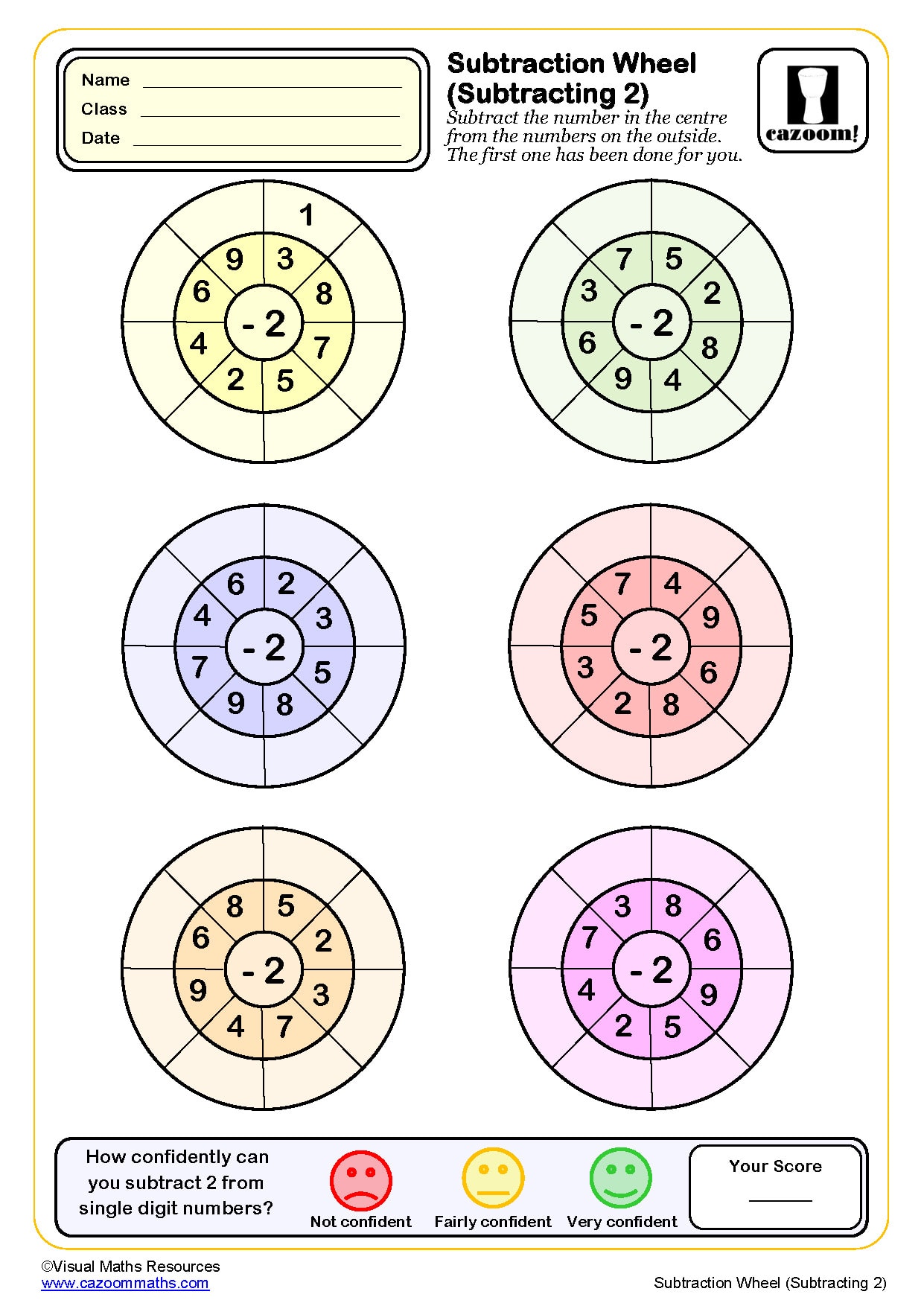
Subtraction Wheels (Subtracting 5)
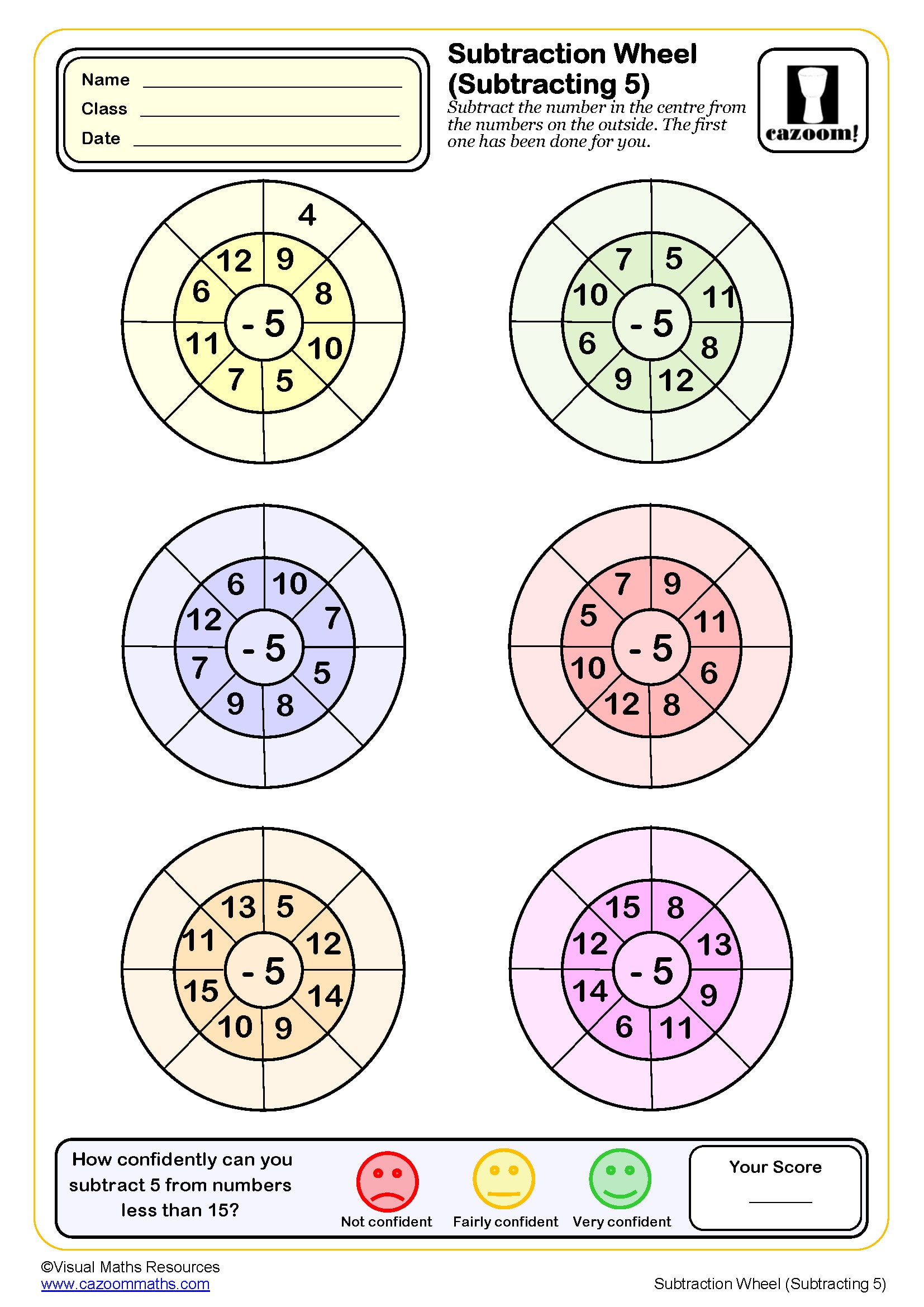
Subtraction Wheels (Subtracting up to 4)
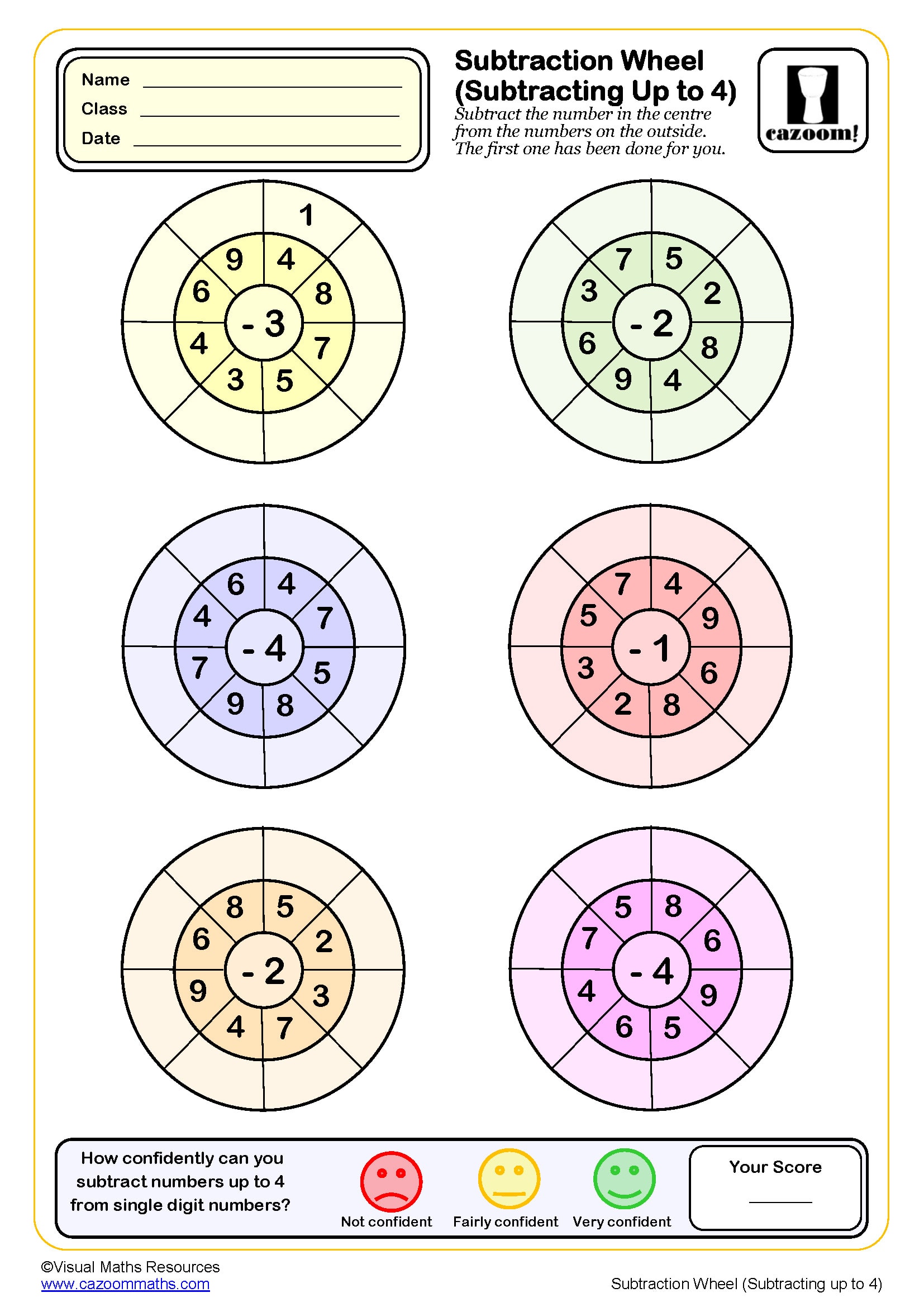
Taking Away 1 (10 questions)
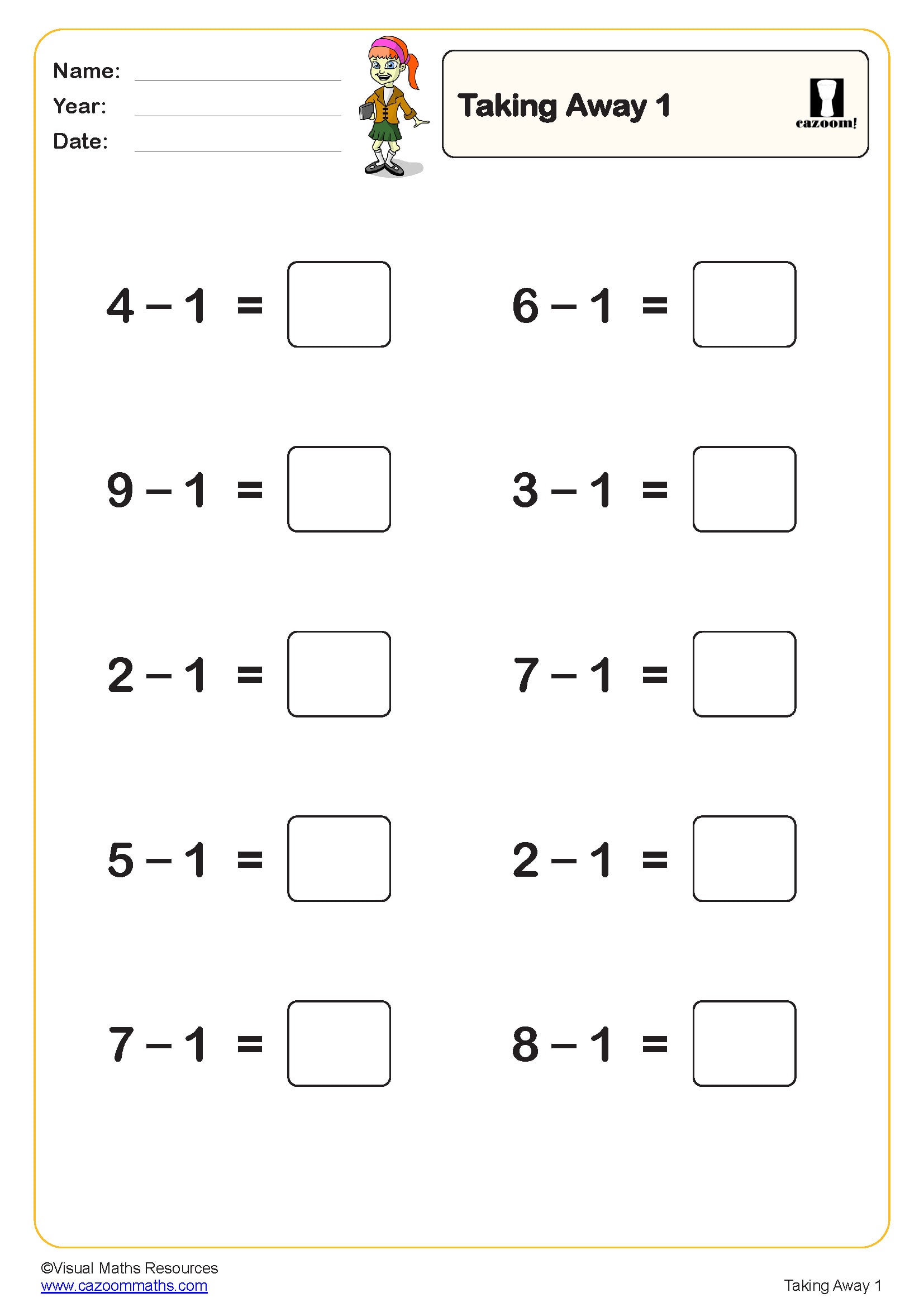
Taking Away 1 (20 questions)
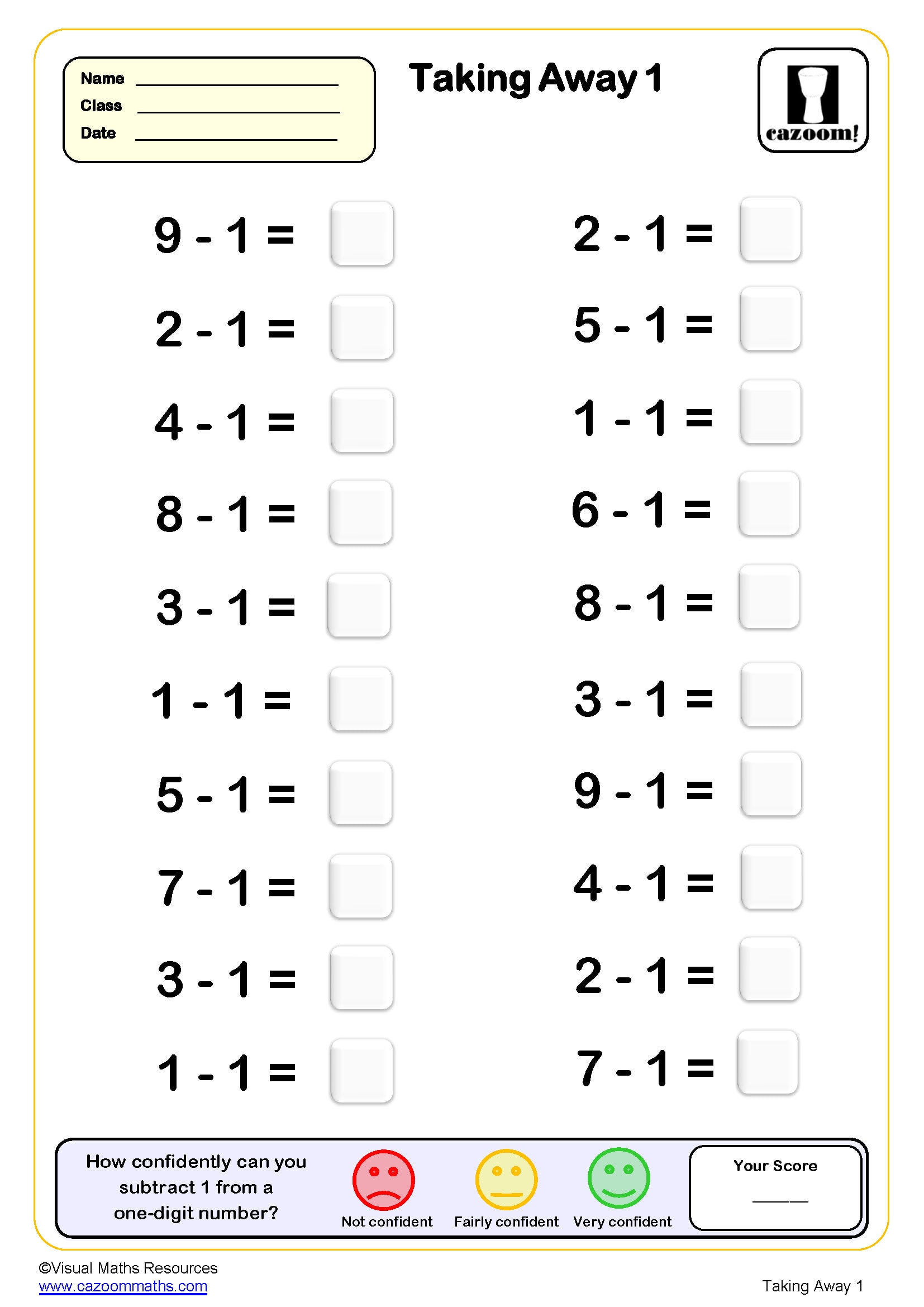
Taking Away 1 (50 questions)
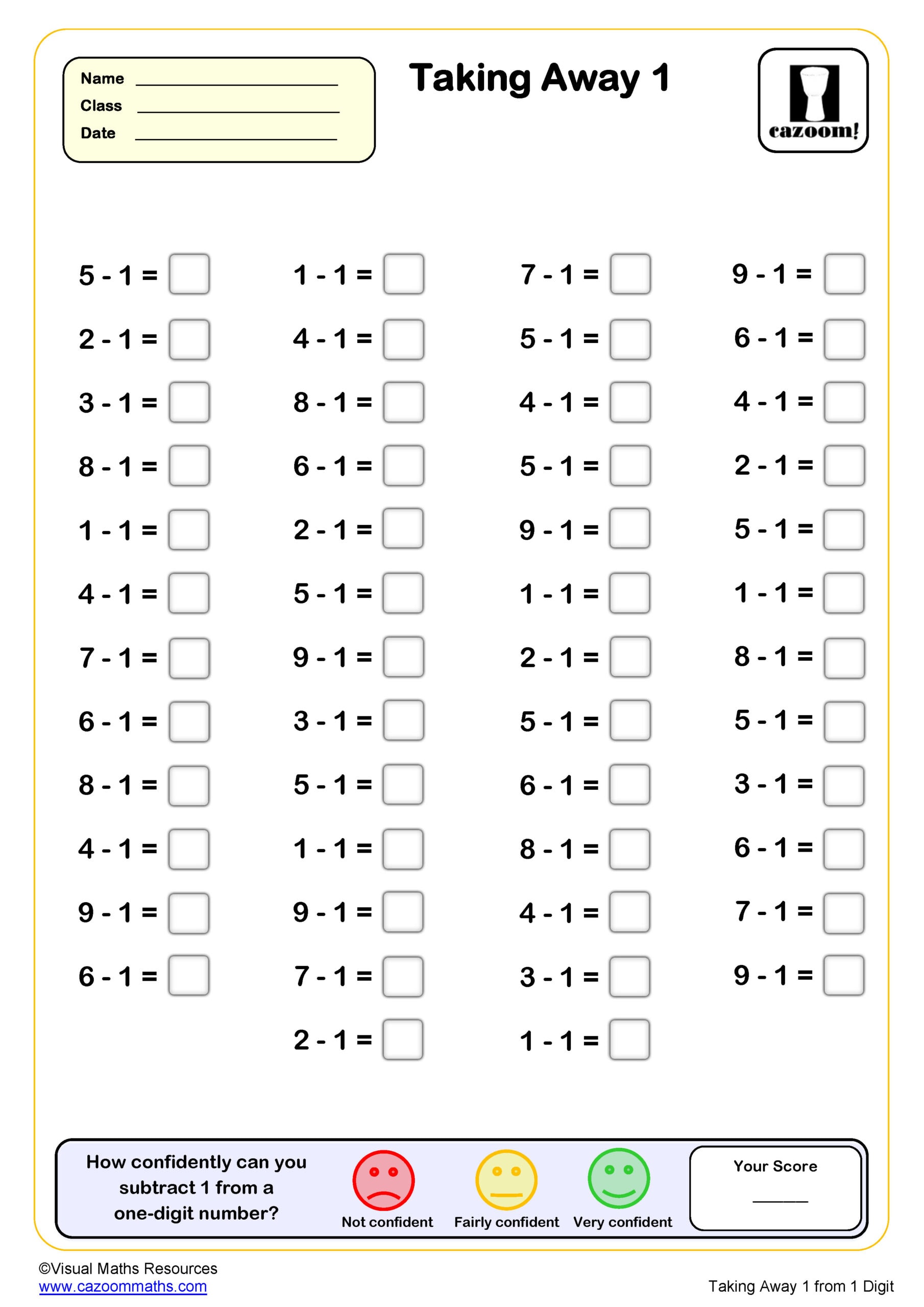
Taking Away 1 from two digit numbers (10 questions)
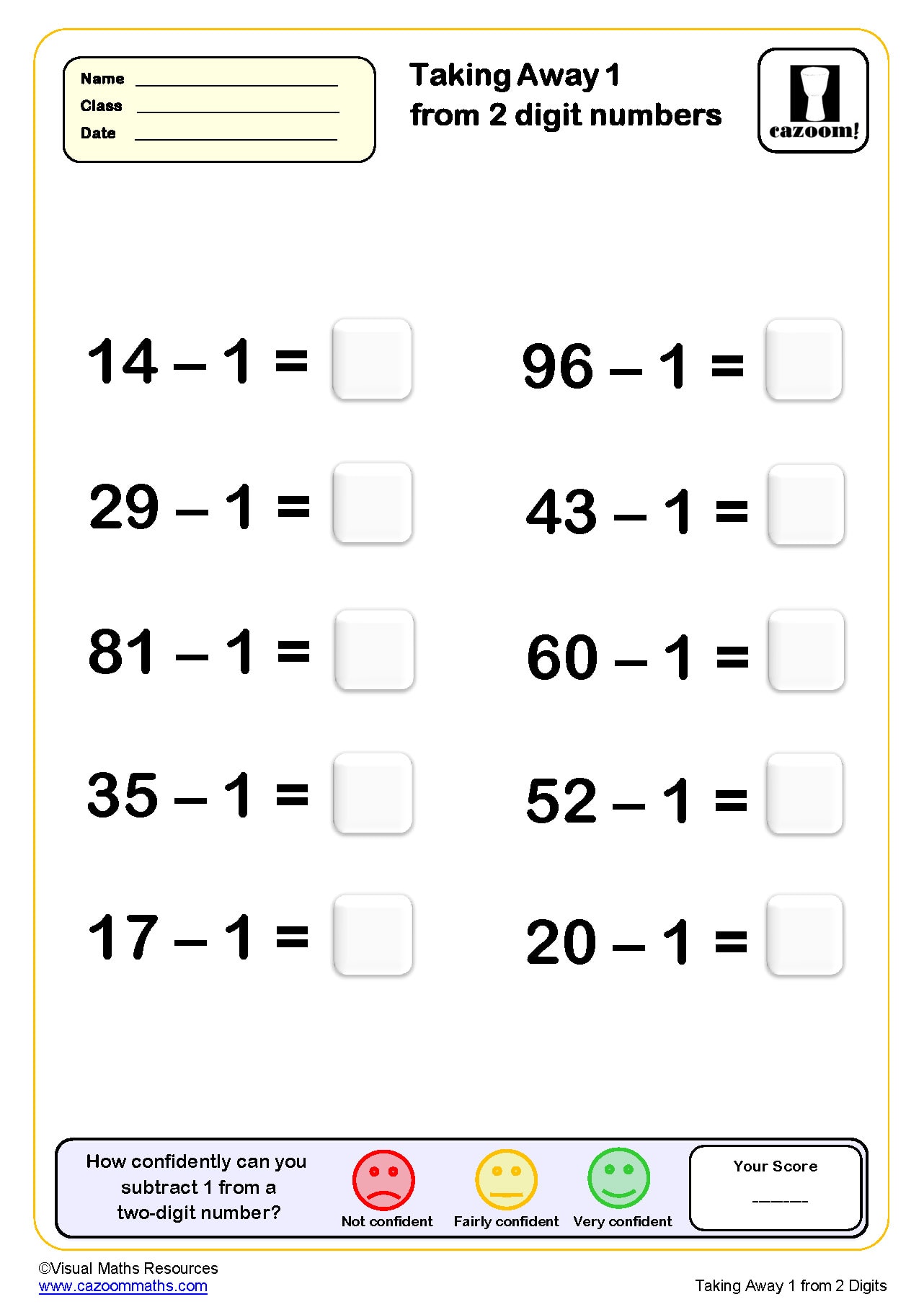
Taking Away 1 from two digit numbers (20 questions)
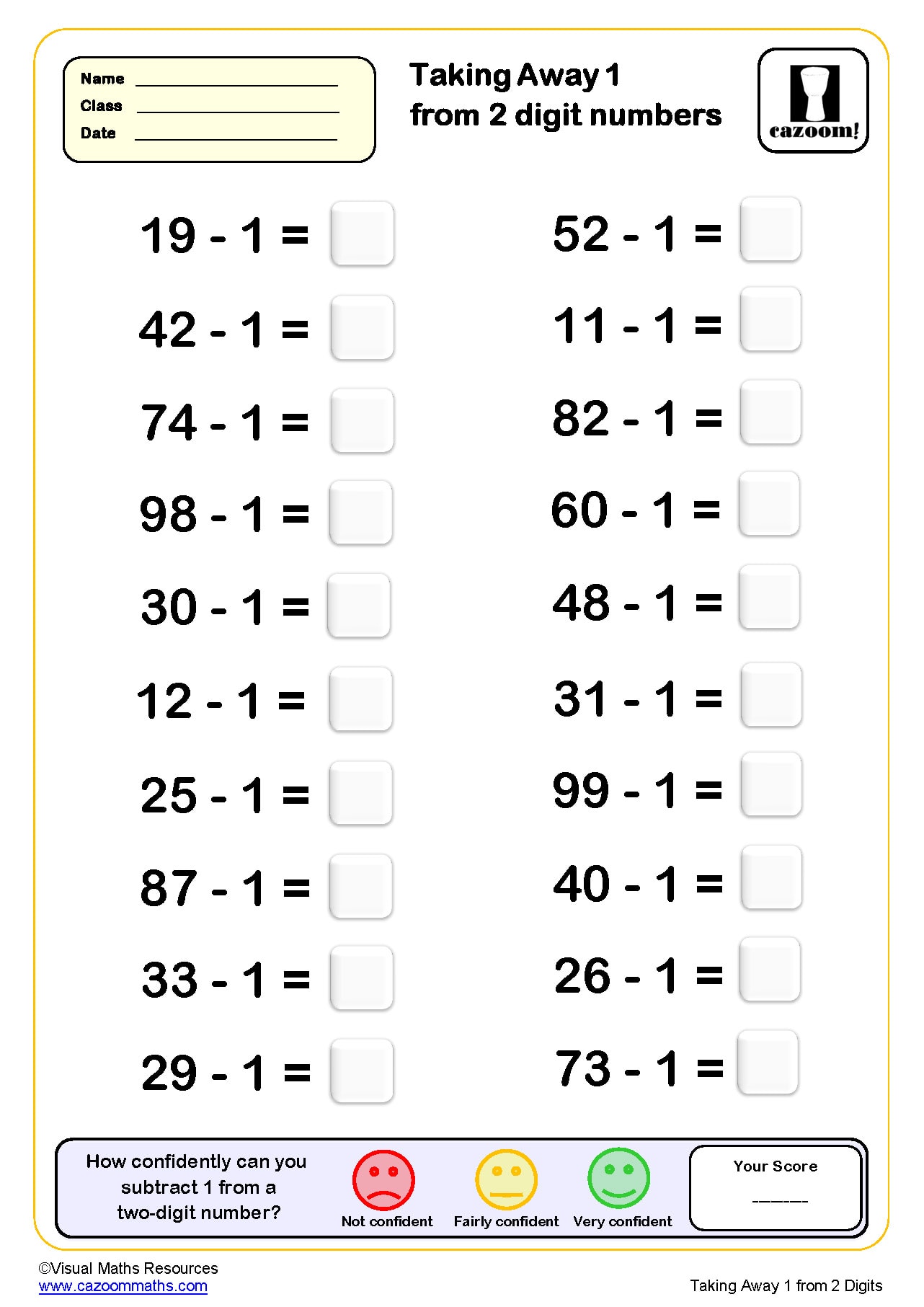
Taking Away 1 from two digit numbers (50 questions)
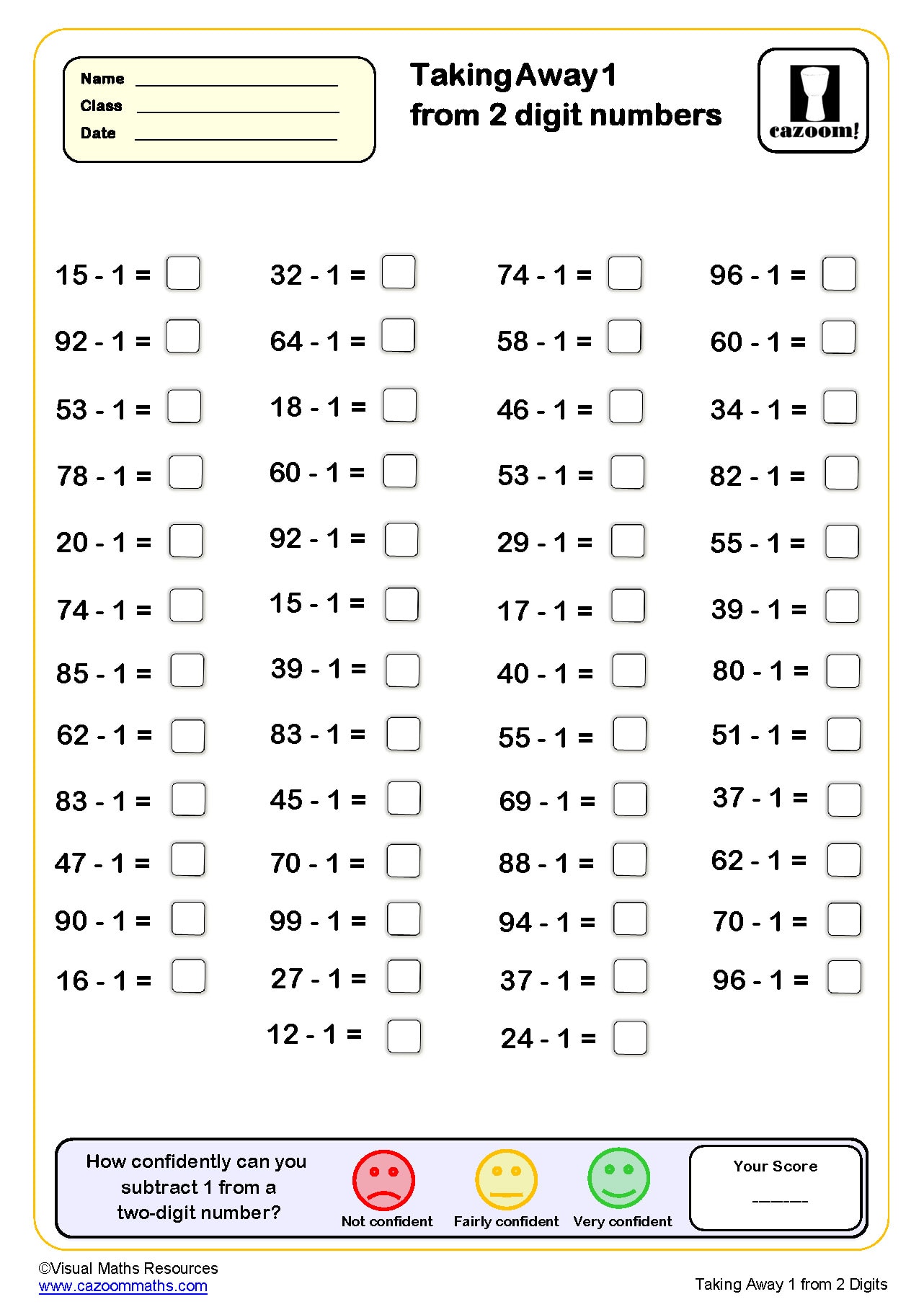
Taking Away 2 (10 questions)
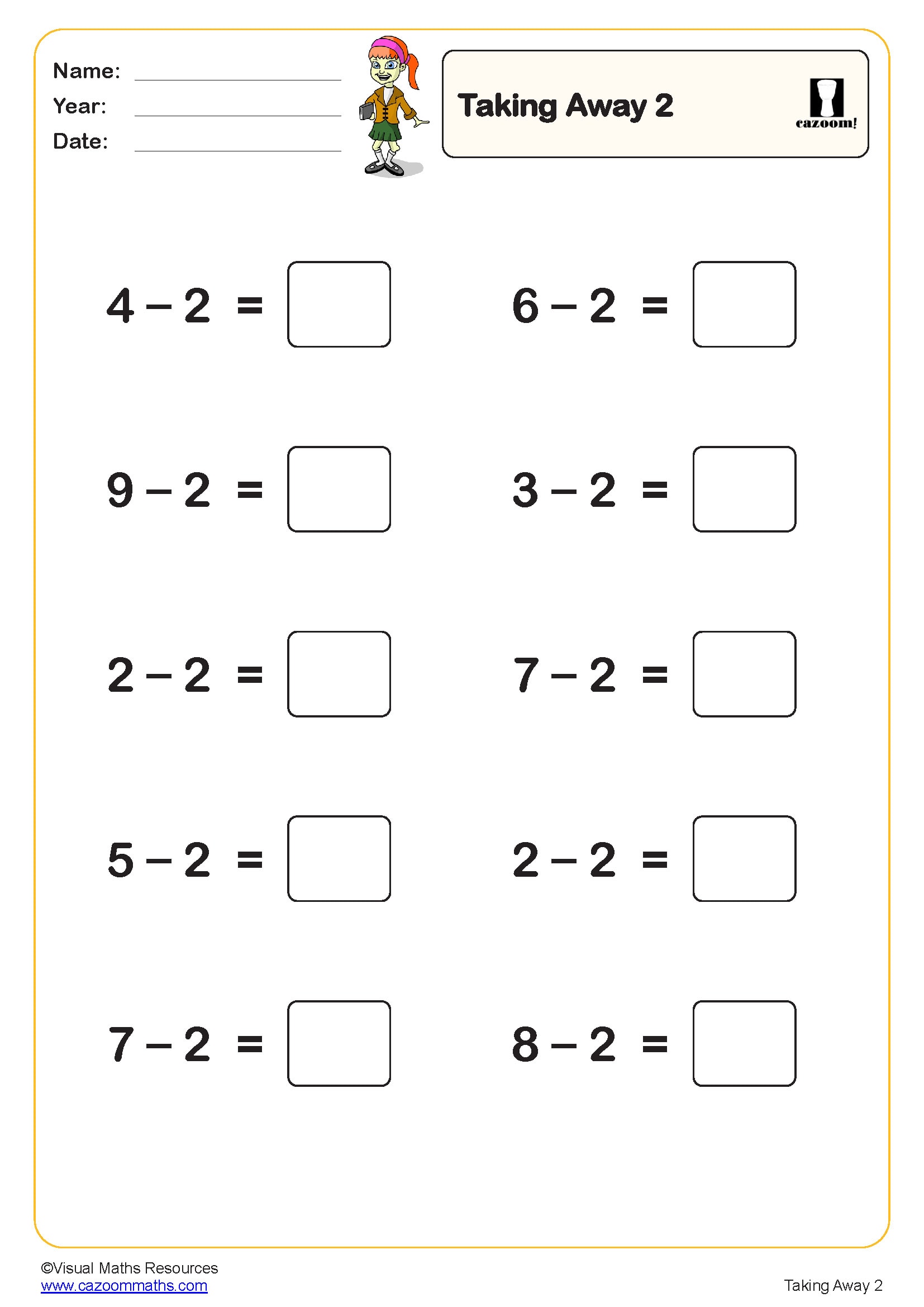
Taking Away 2 (20 questions)
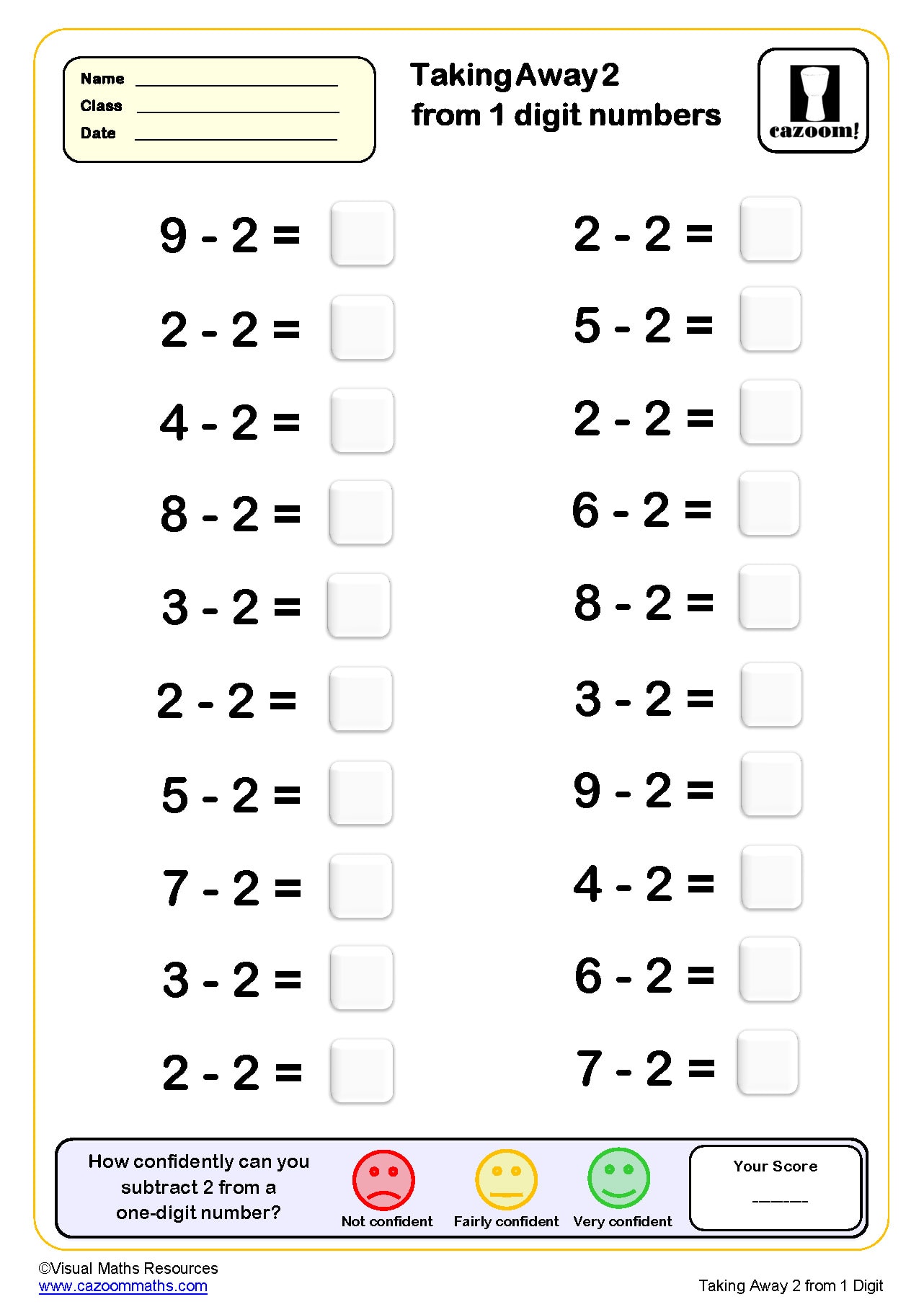
Taking Away 2 (50 questions)
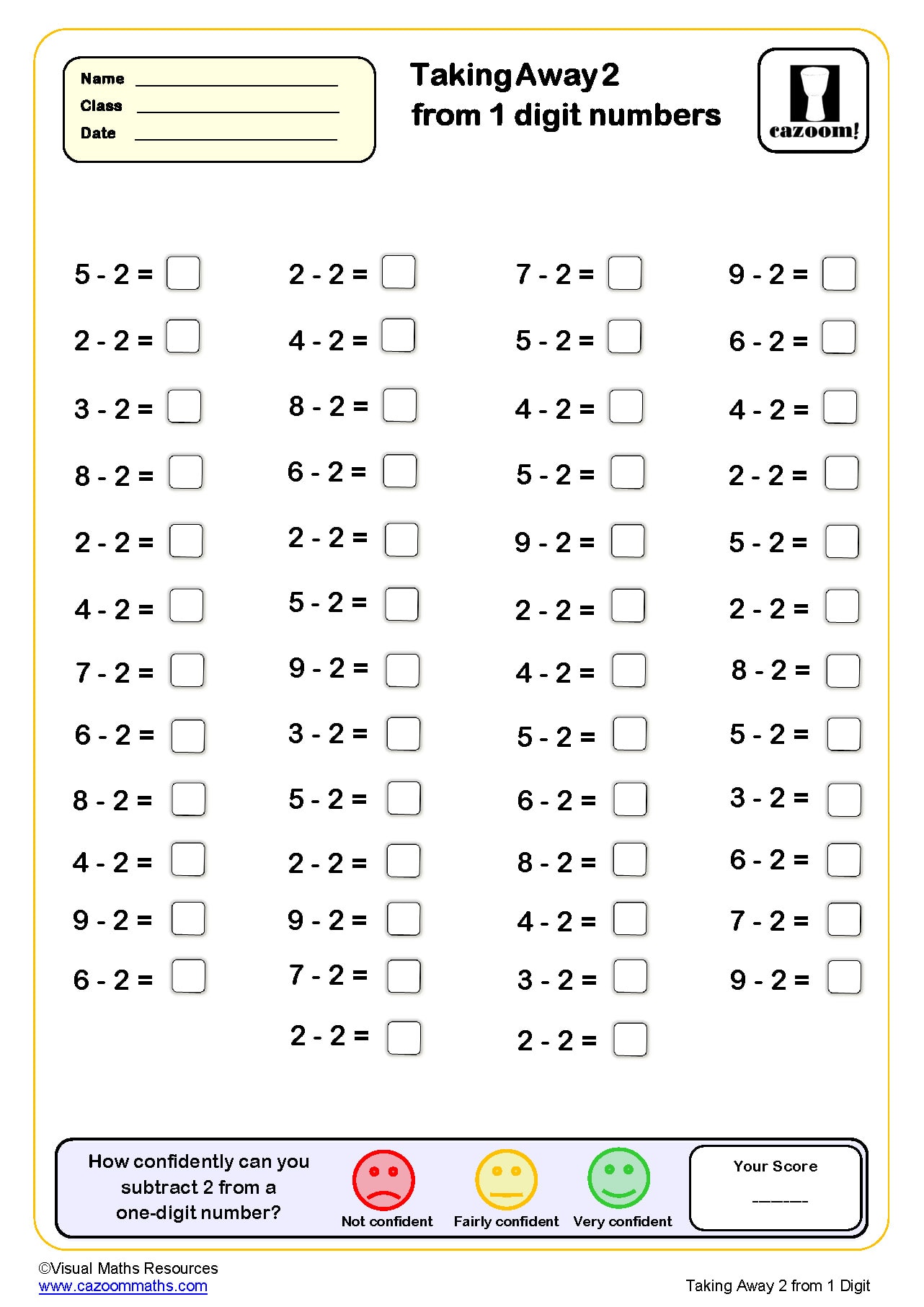
Taking Away 2 from two digit numbers (20 questions)
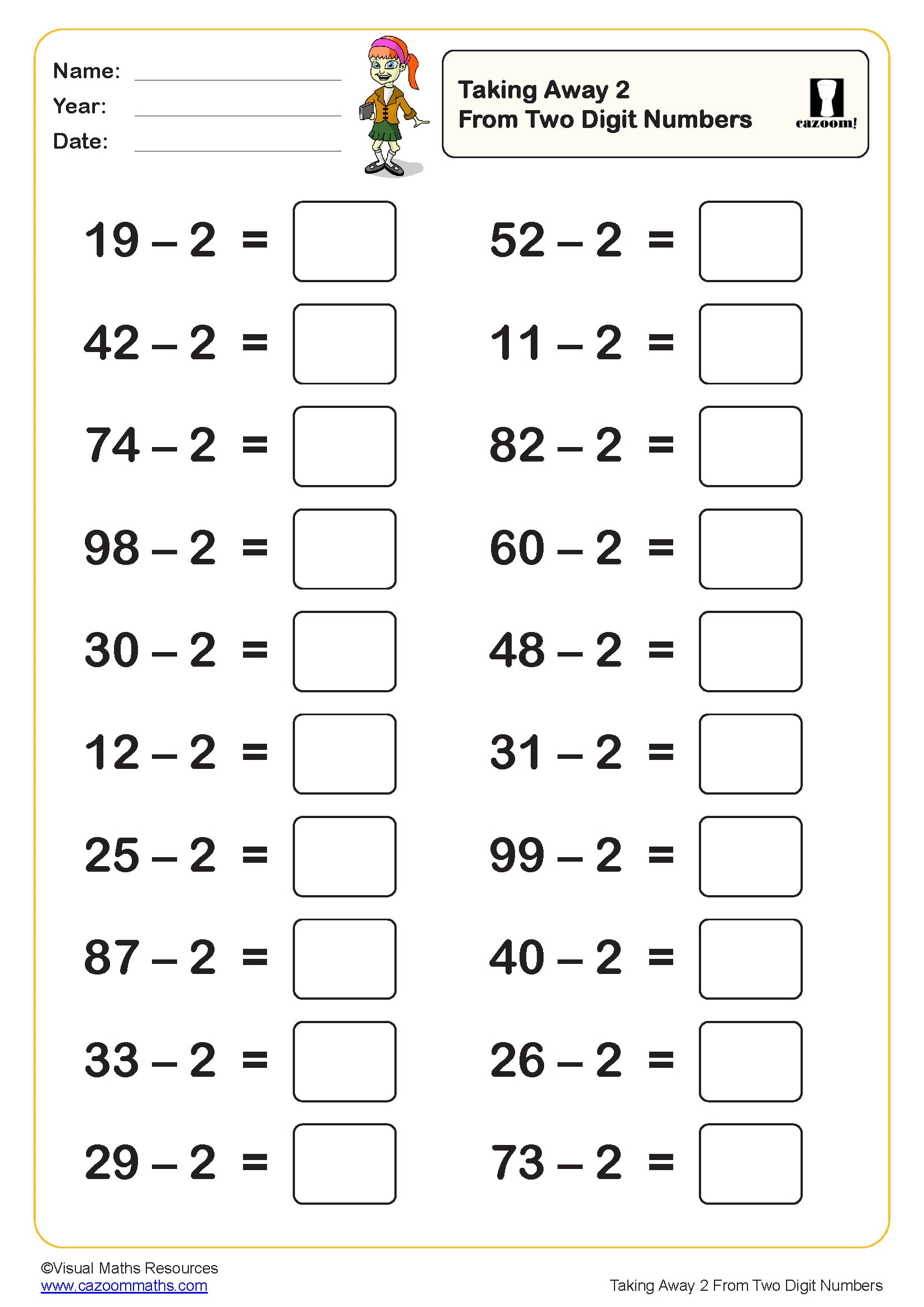
Taking Away 2 from two digit numbers (50 questions)
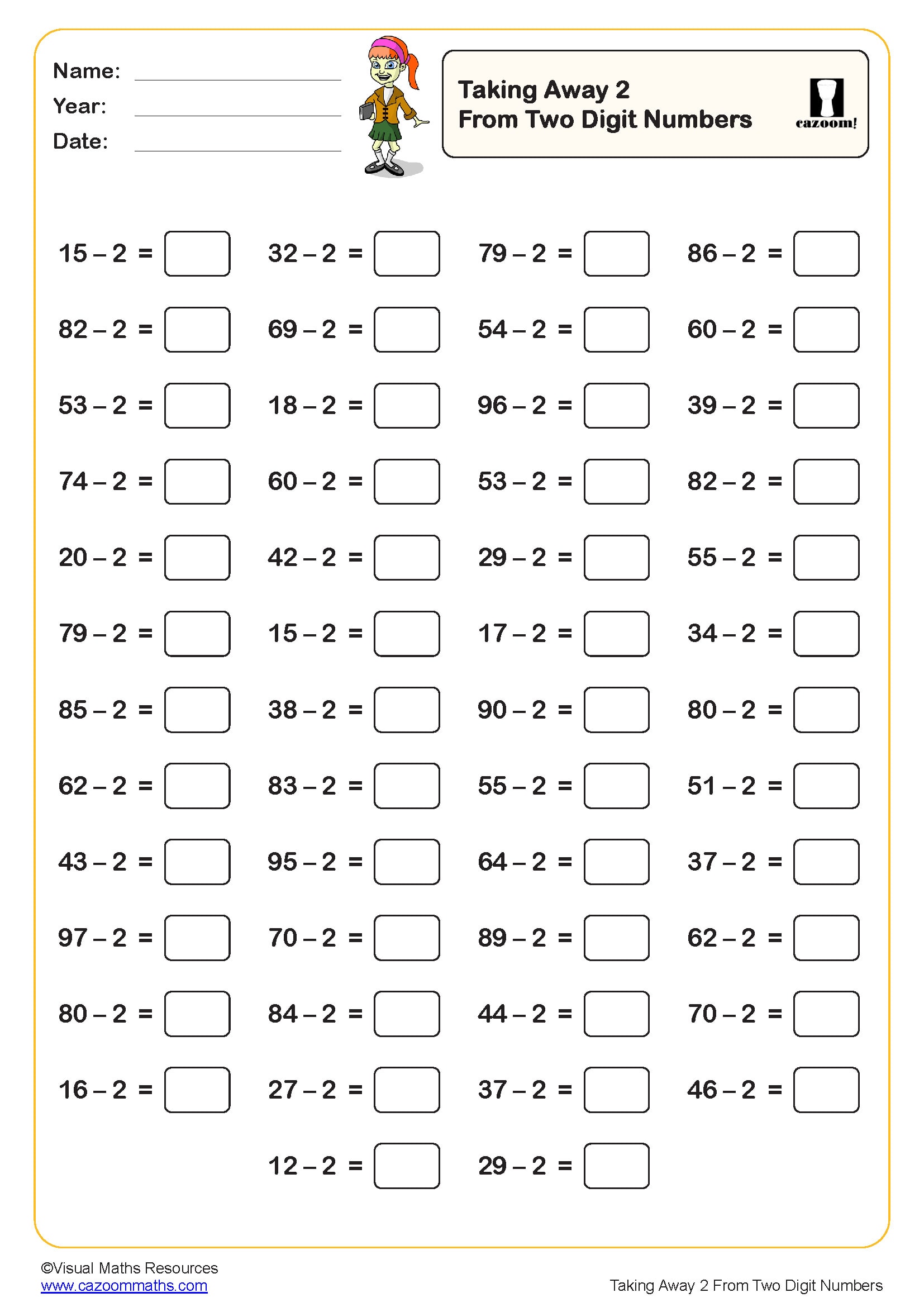
Taking Away Numbers Less Than 10 (A)
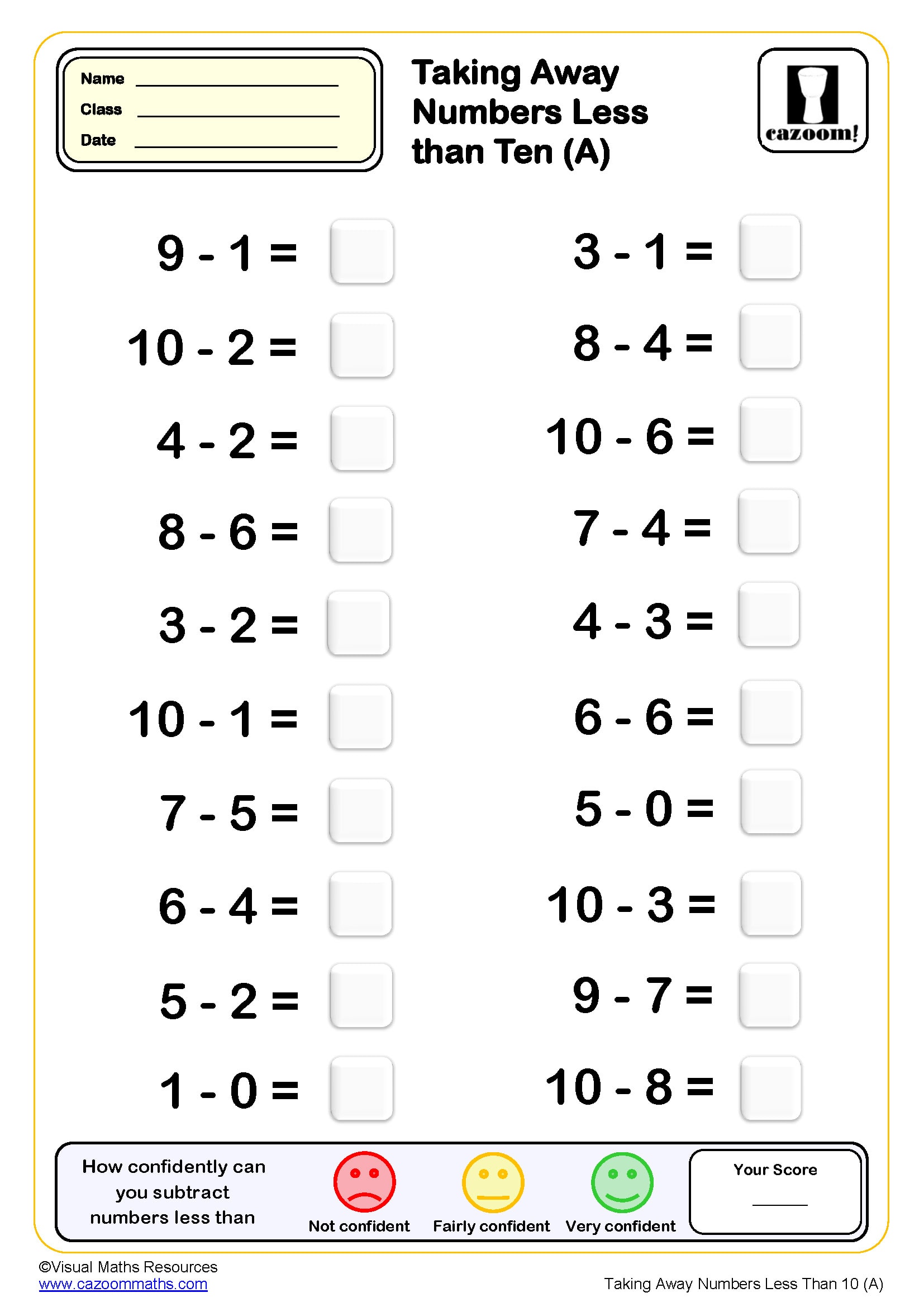
Taking Away Numbers Less Than 10 (B)
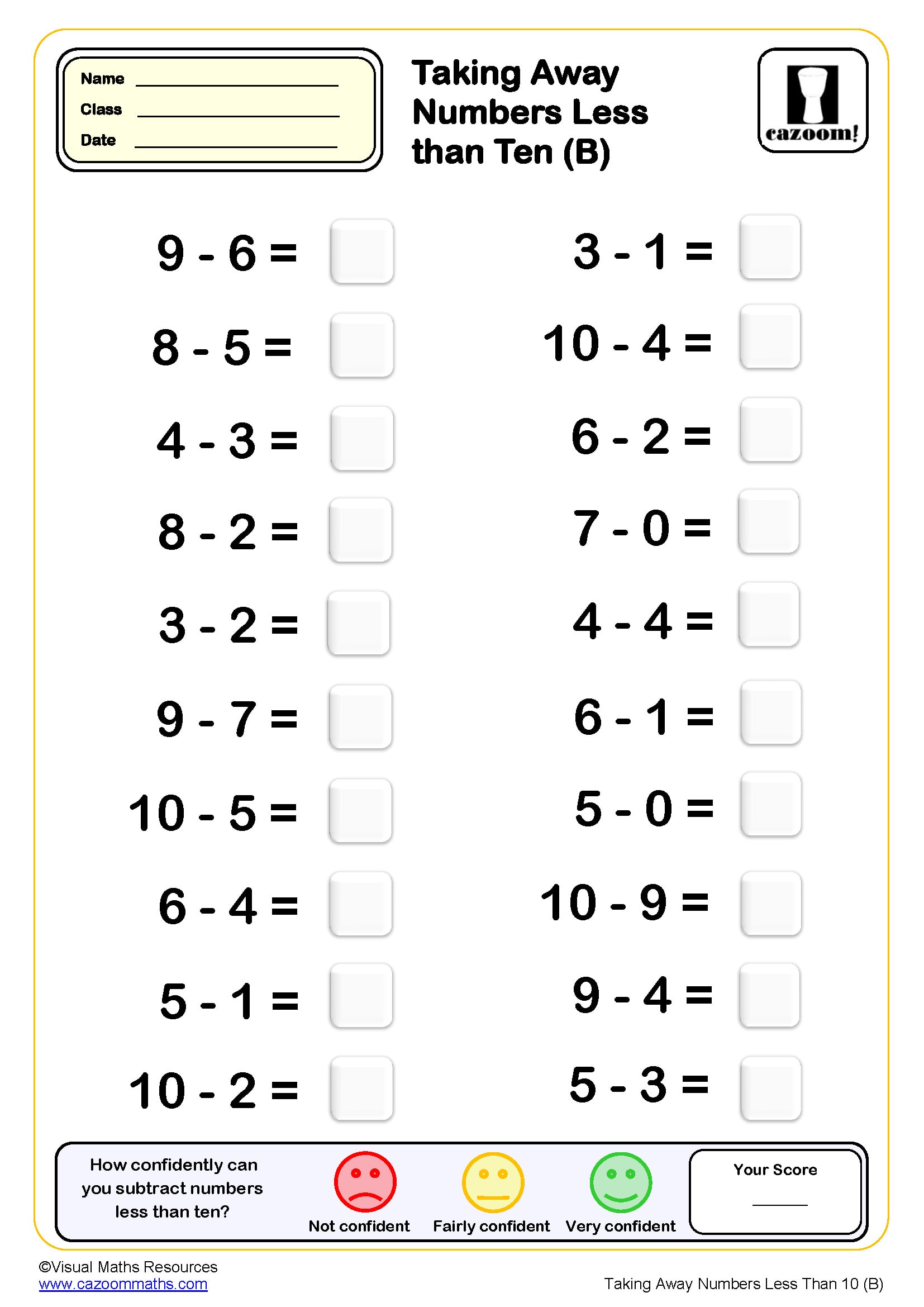
Taking Away Numbers Less Than 10 (C)
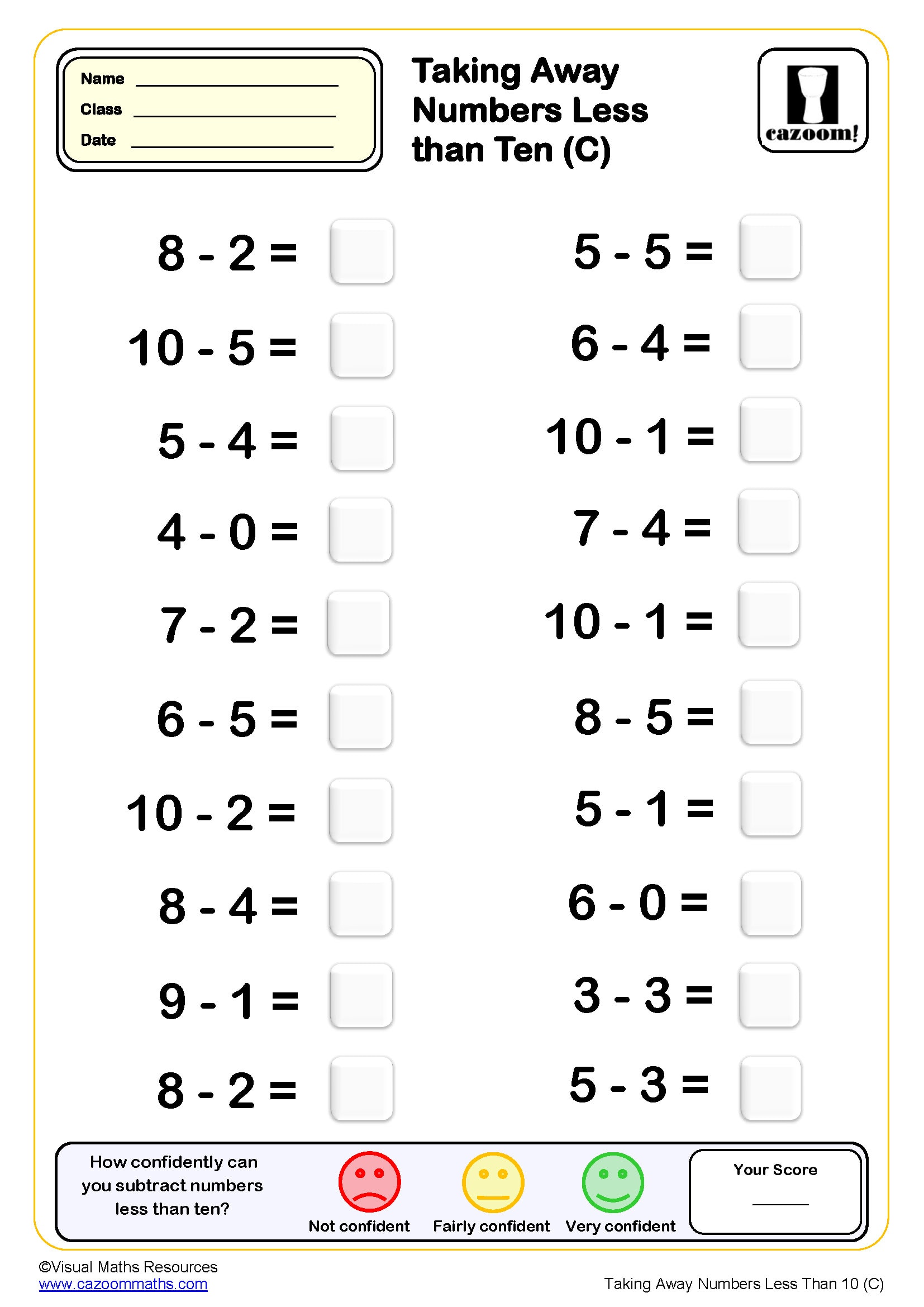
Taking Away Numbers Less Than 15 (A)
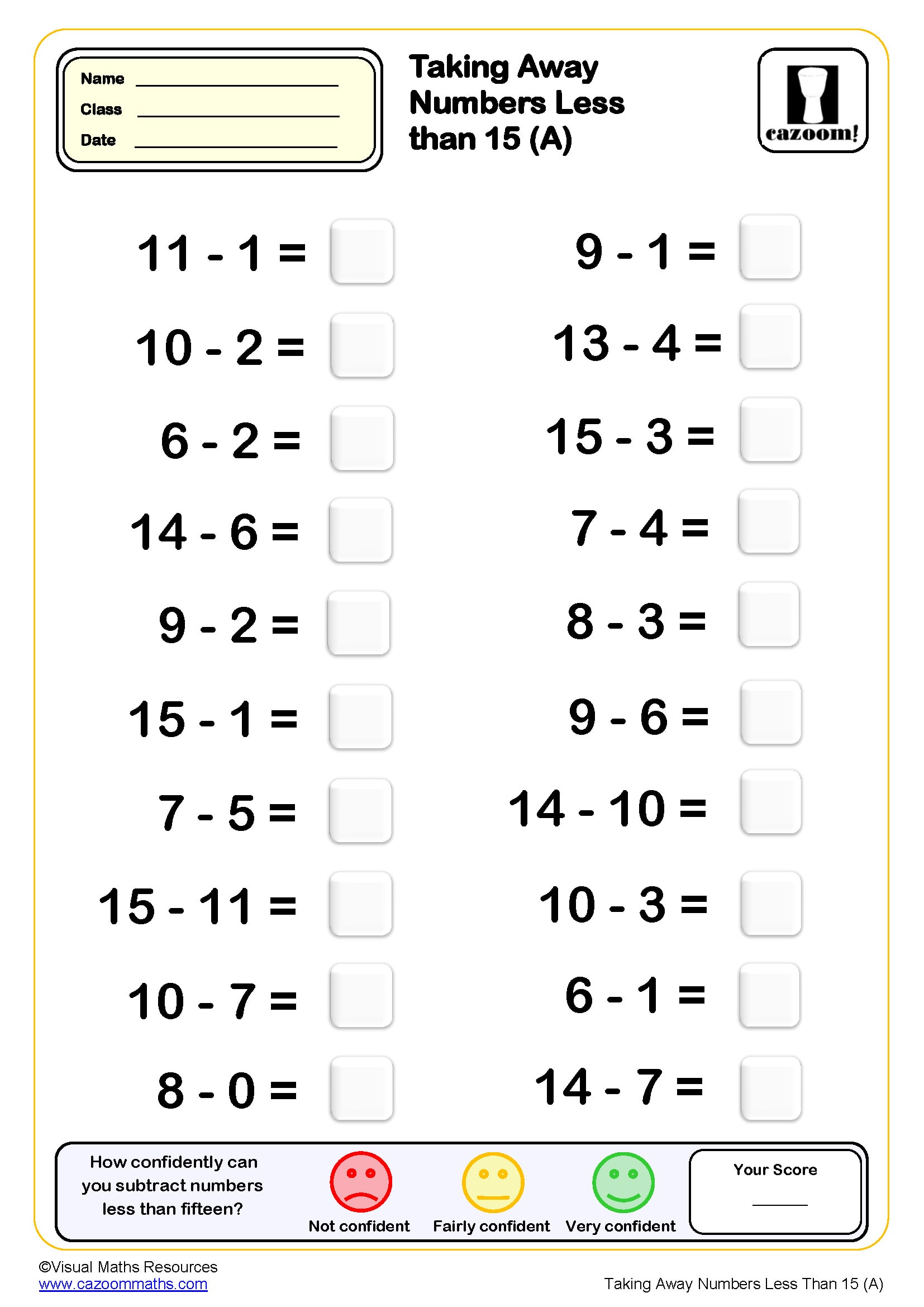
Taking Away Numbers Less Than 15 (B)
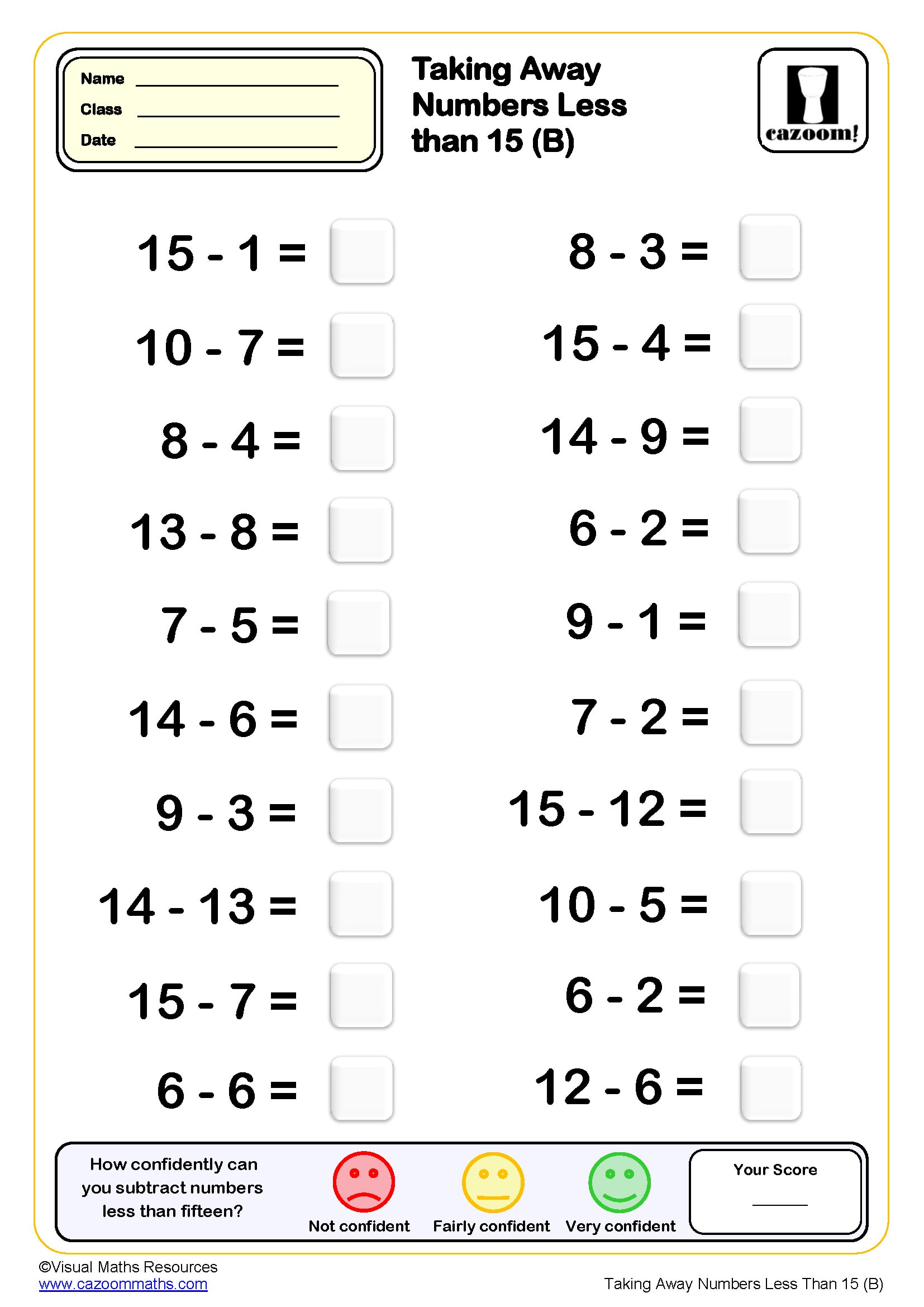
Taking Away Numbers Less Than 15 (C)
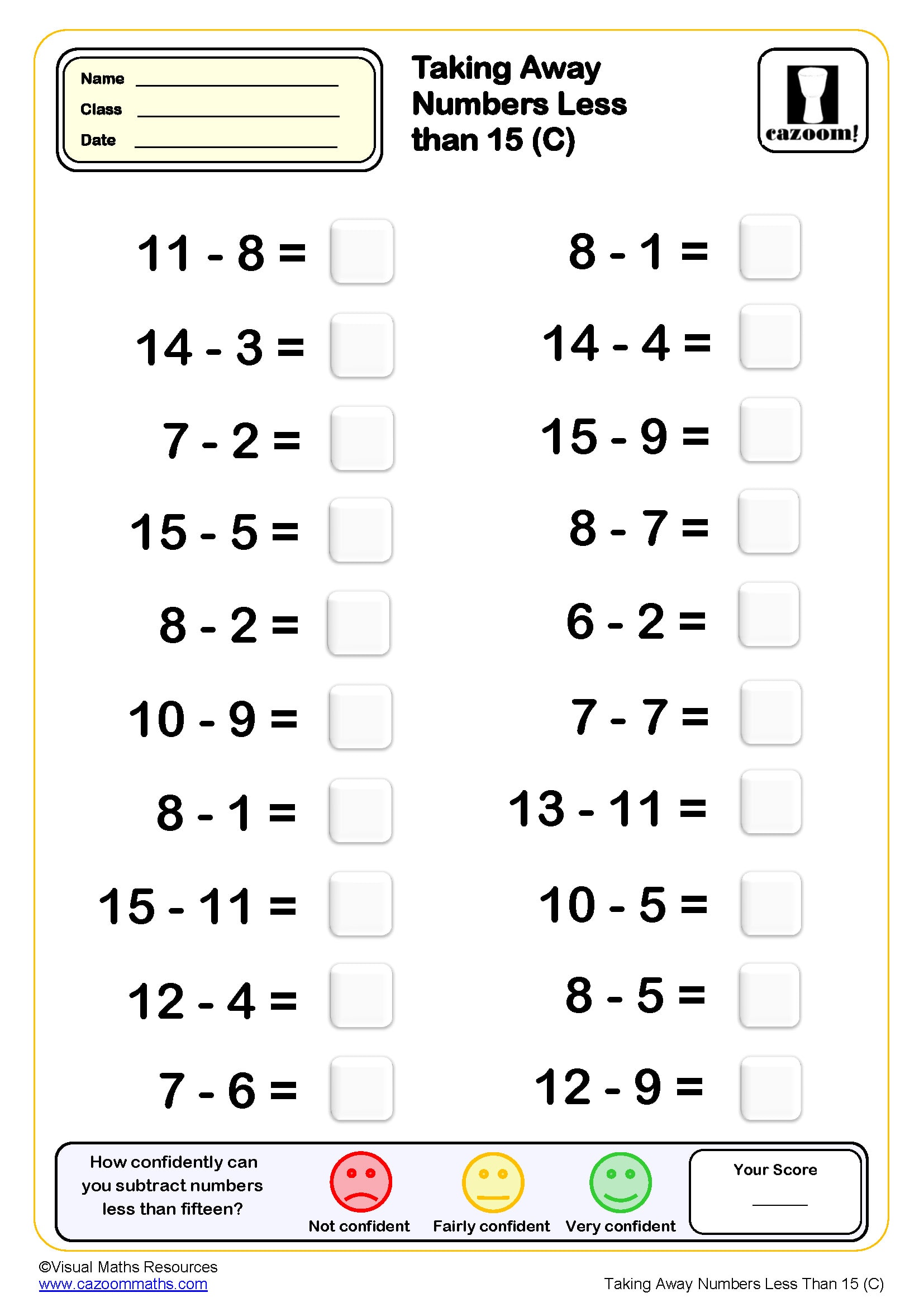
Taking Away Numbers Less Than 6 (A)
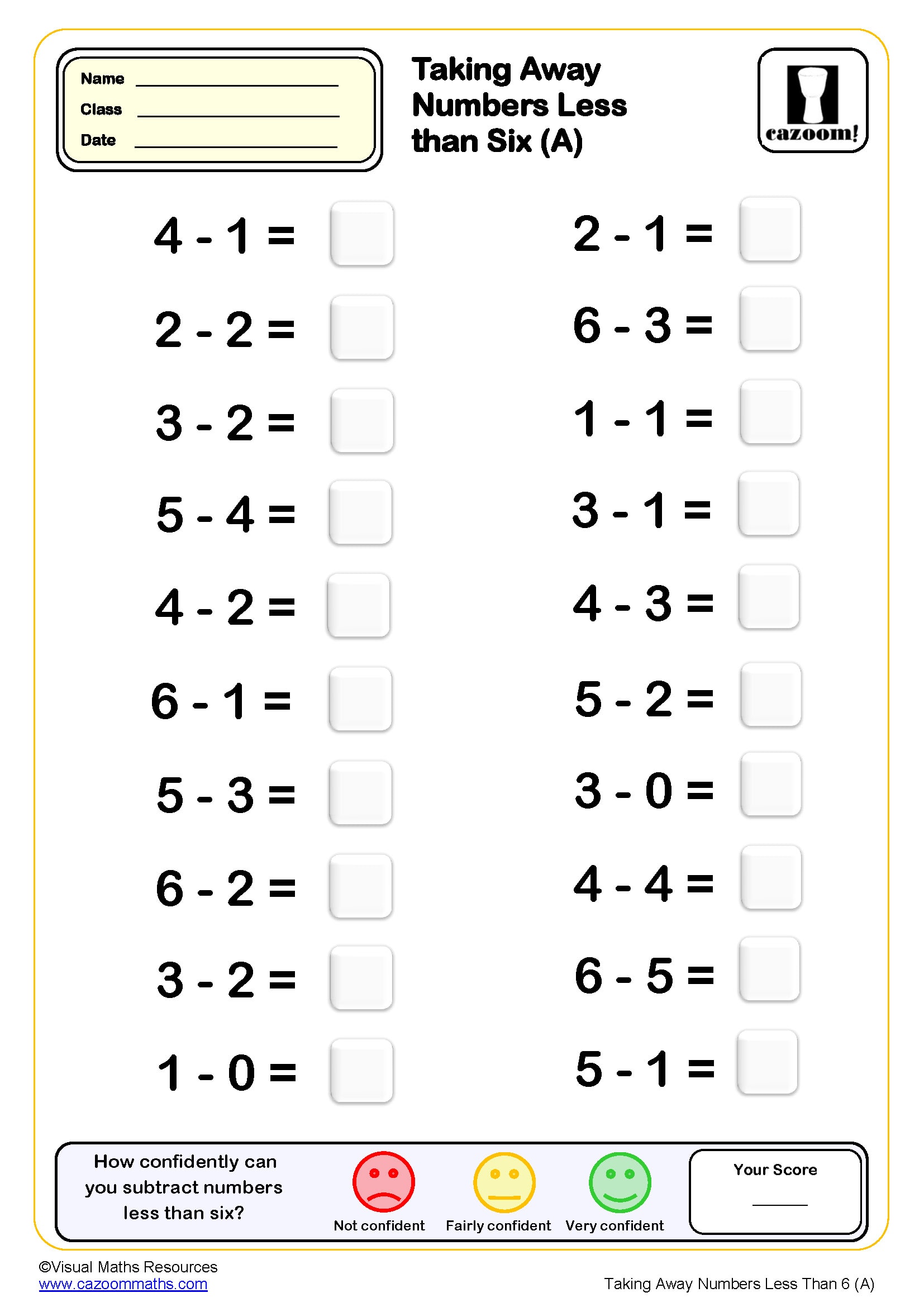
Taking Away Numbers Less Than 6 (B)
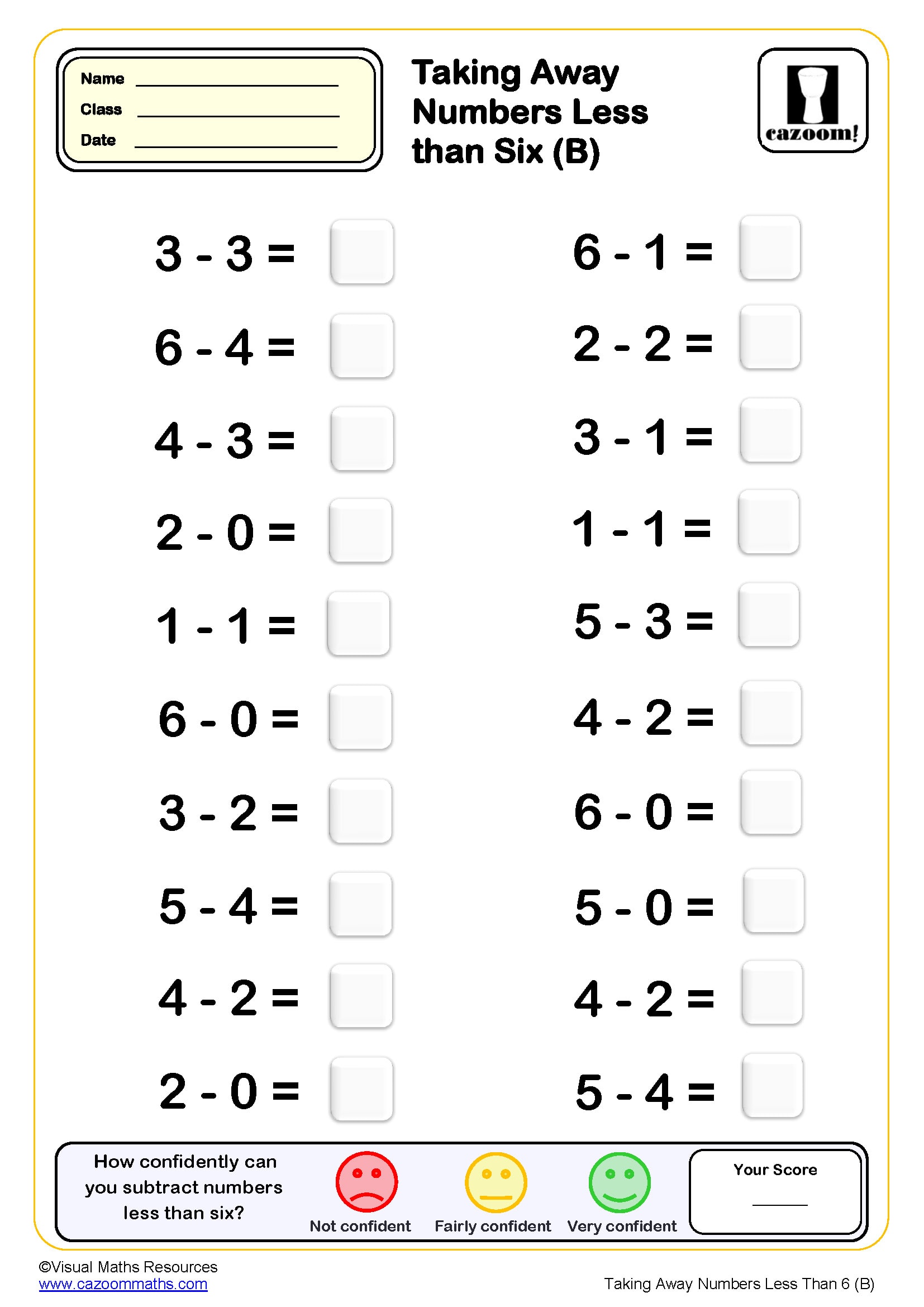
Taking Away Numbers Less Than 6 (C)
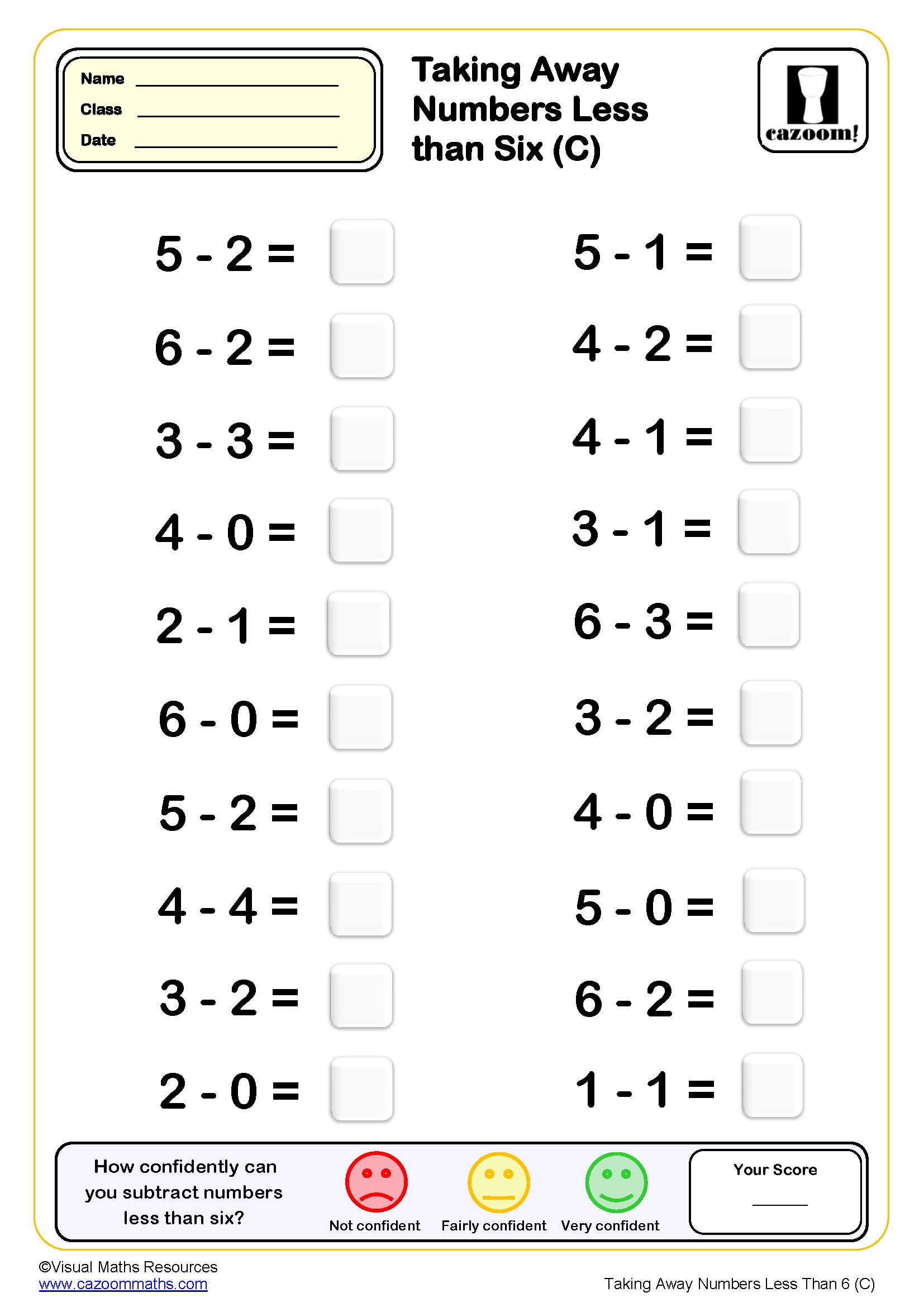
Premium Year 1 Subtraction Worksheets – Printable PDFs with Complete Answer Keys
These Year 1 subtraction worksheets provide a wide variety of activities that cover all the key subtraction methods children need at this stage. Pupils will practise subtracting within 10 and 20, using number lines, and solving simple subtraction word problems. Carefully graded exercises move from concrete “taking away” with objects and pictures to more abstract calculations, supporting children as they progress through KS1.
Why Year 1 Subtraction Practice Boosts Mathematical Confidence
Our printable Year 1 subtraction worksheets provide structured practice that helps children gain fluency and accuracy with basic calculations. They encourage children to recognise subtraction as both “taking away” and “finding the difference,” giving them a deeper conceptual understanding. Regular practice with these resources builds confidence, prepares children for future topics like two-digit subtraction, and allows teachers to identify any areas needing extra support.
Key benefits include:
• Builds fluency with subtraction facts to 20
• Develops early mental maths strategies
• Supports learning through number lines and visual models
• Reinforces subtraction in word problems
• Strengthens confidence in classroom and homework tasks
• Prepares children for more advanced subtraction methods in Year 2
Everyday Uses of Subtraction Skills for Young Learners
Subtraction is a skill children use daily without even realising it. These worksheets connect classroom learning with real-life applications, helping children see the value of what they are practising. Whether at home or in the classroom, subtraction skills support independence, logical thinking, and everyday problem-solving.
• Everyday subtraction examples include:
•Working out how many toys are left after sharing
• Counting down the days to a birthday or holiday
• Calculating scores in simple games and activities
•Subtracting coins to work out change
• Measuring ingredients when cooking with family
•Understanding time differences in daily routines